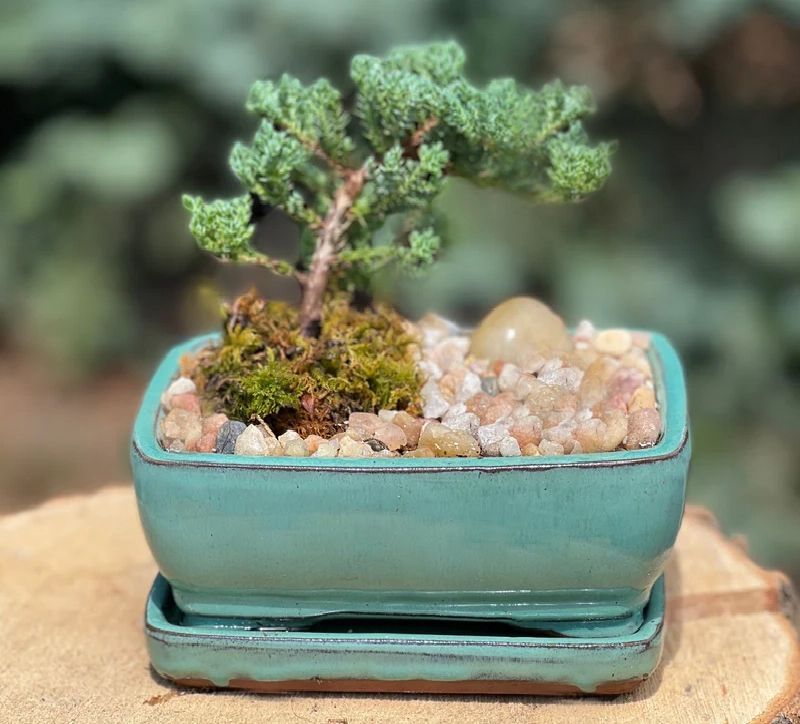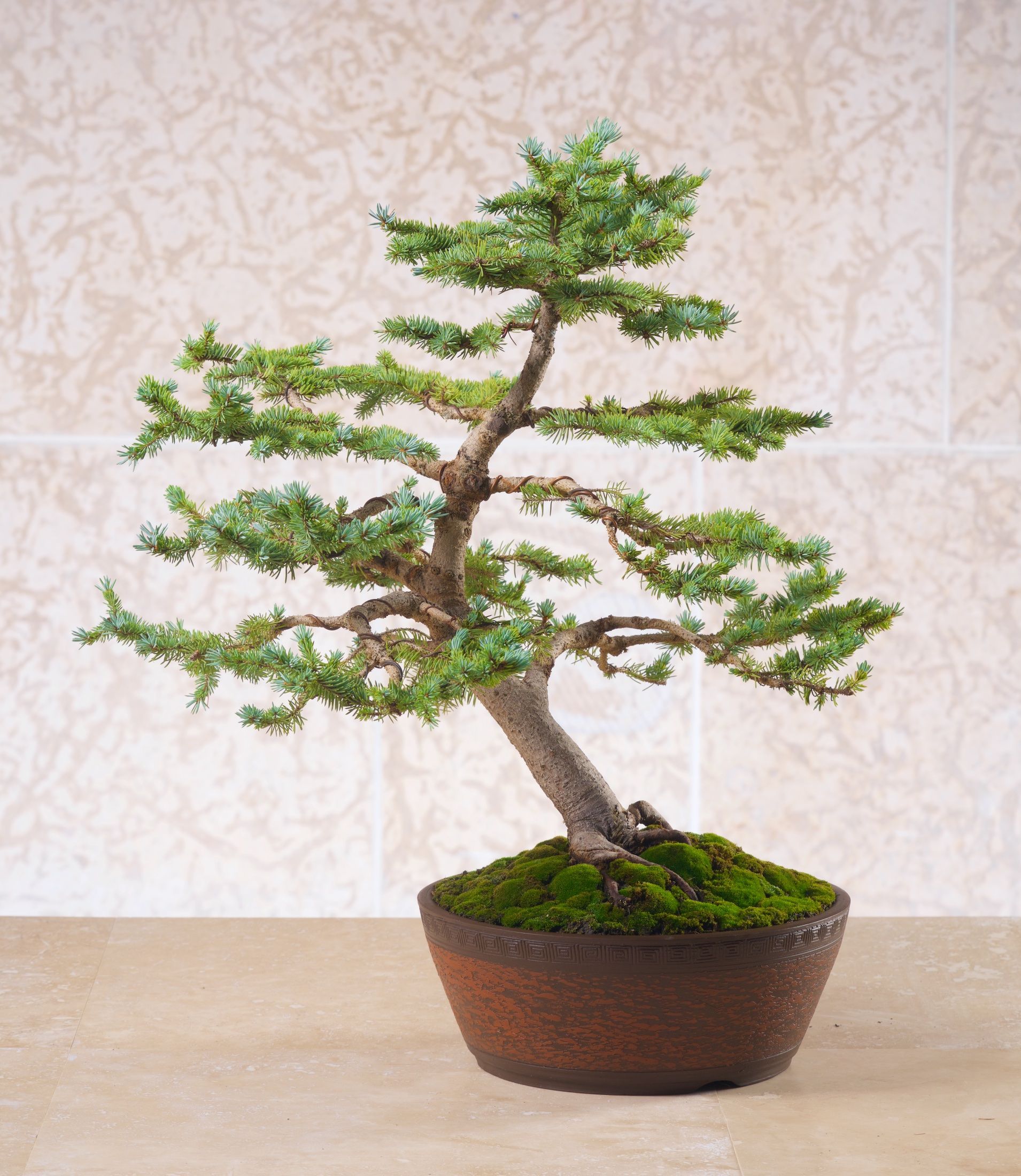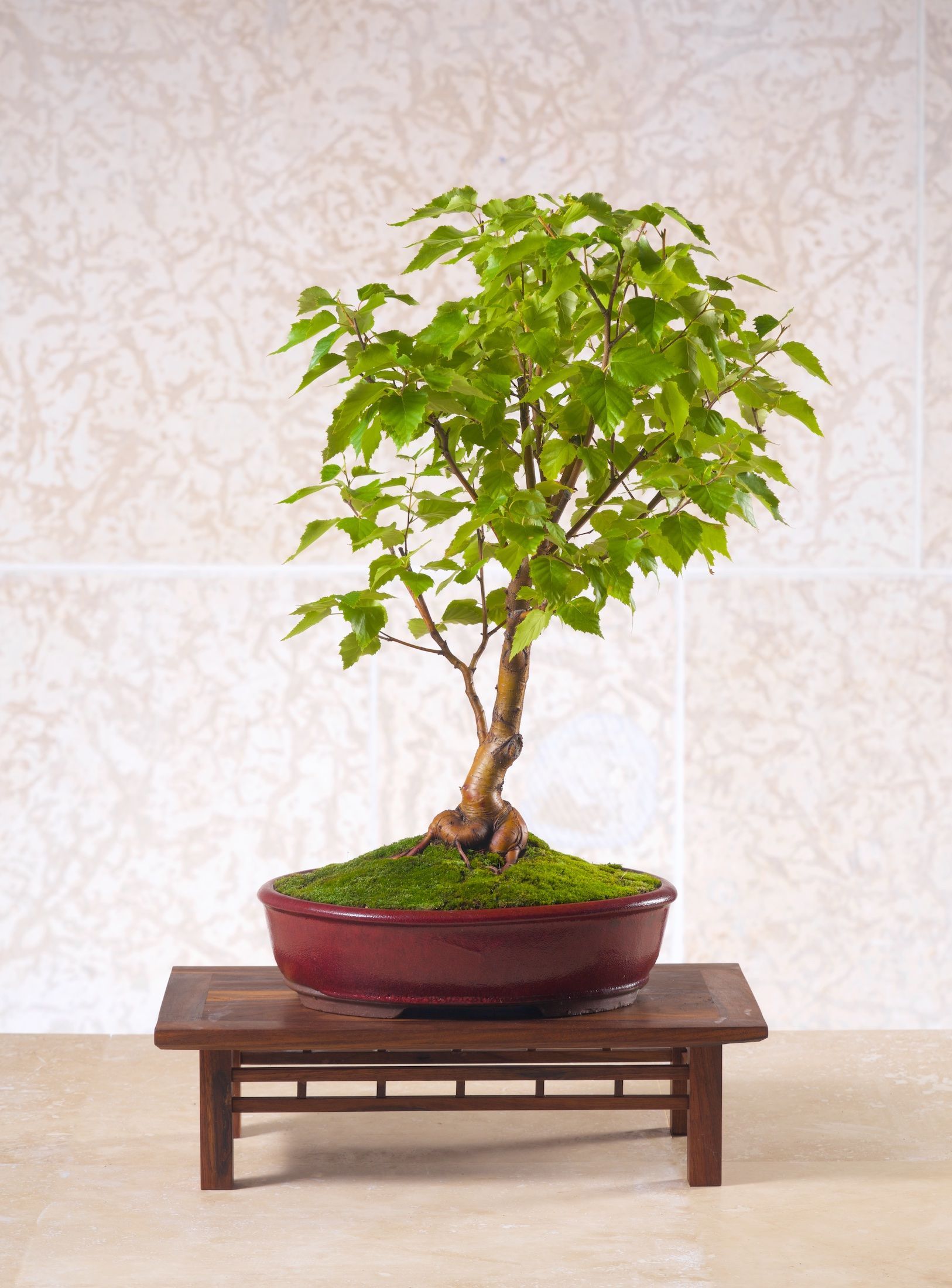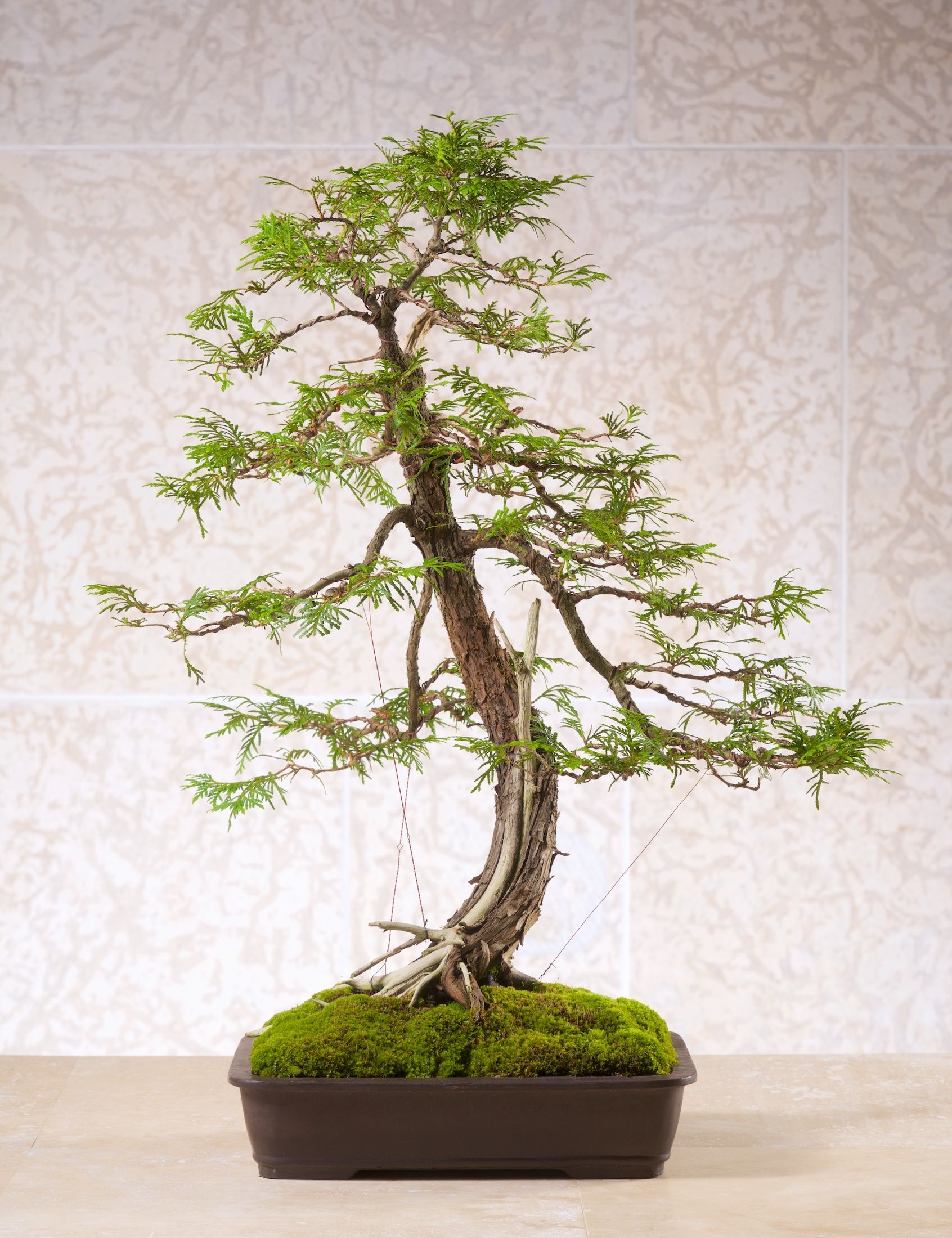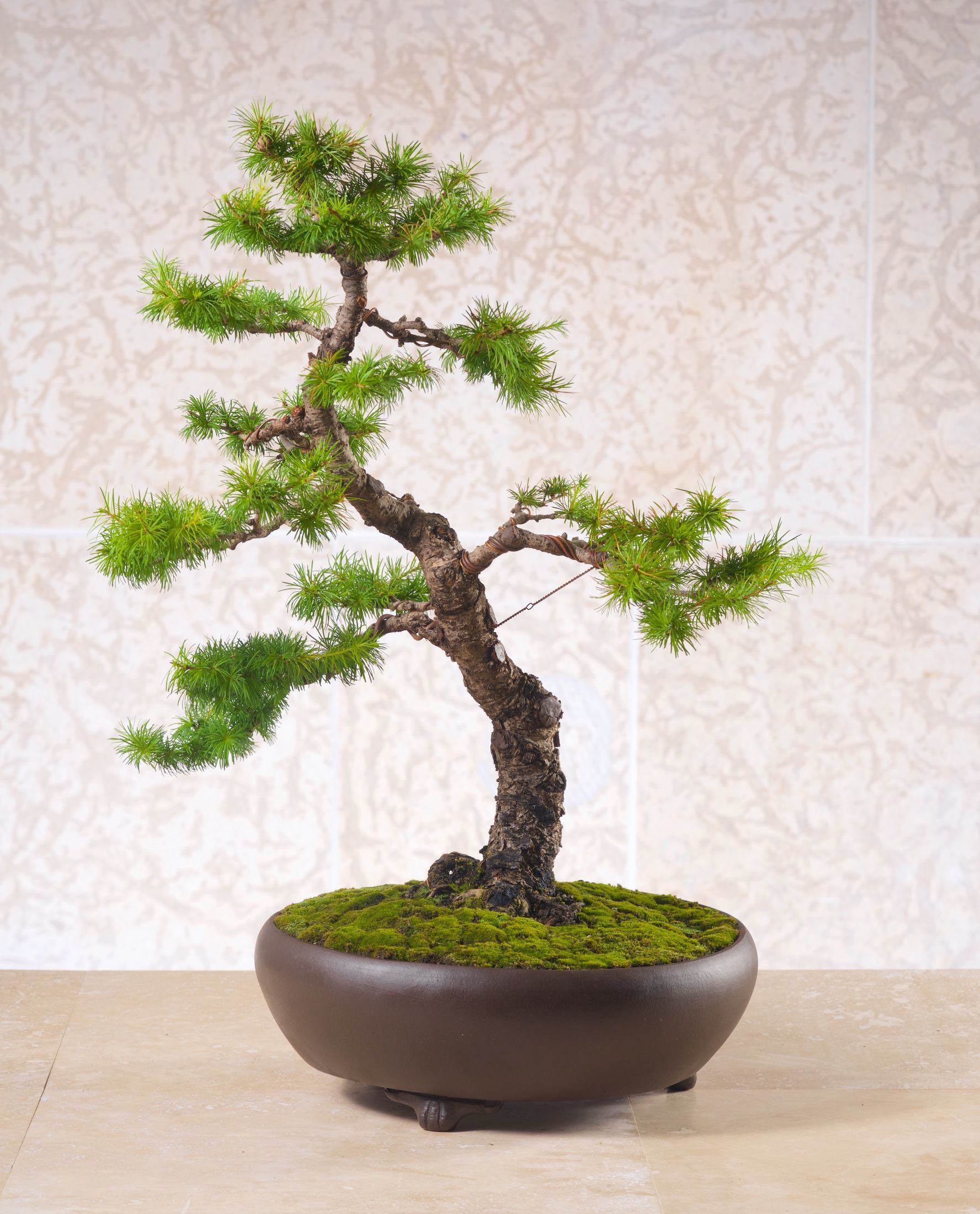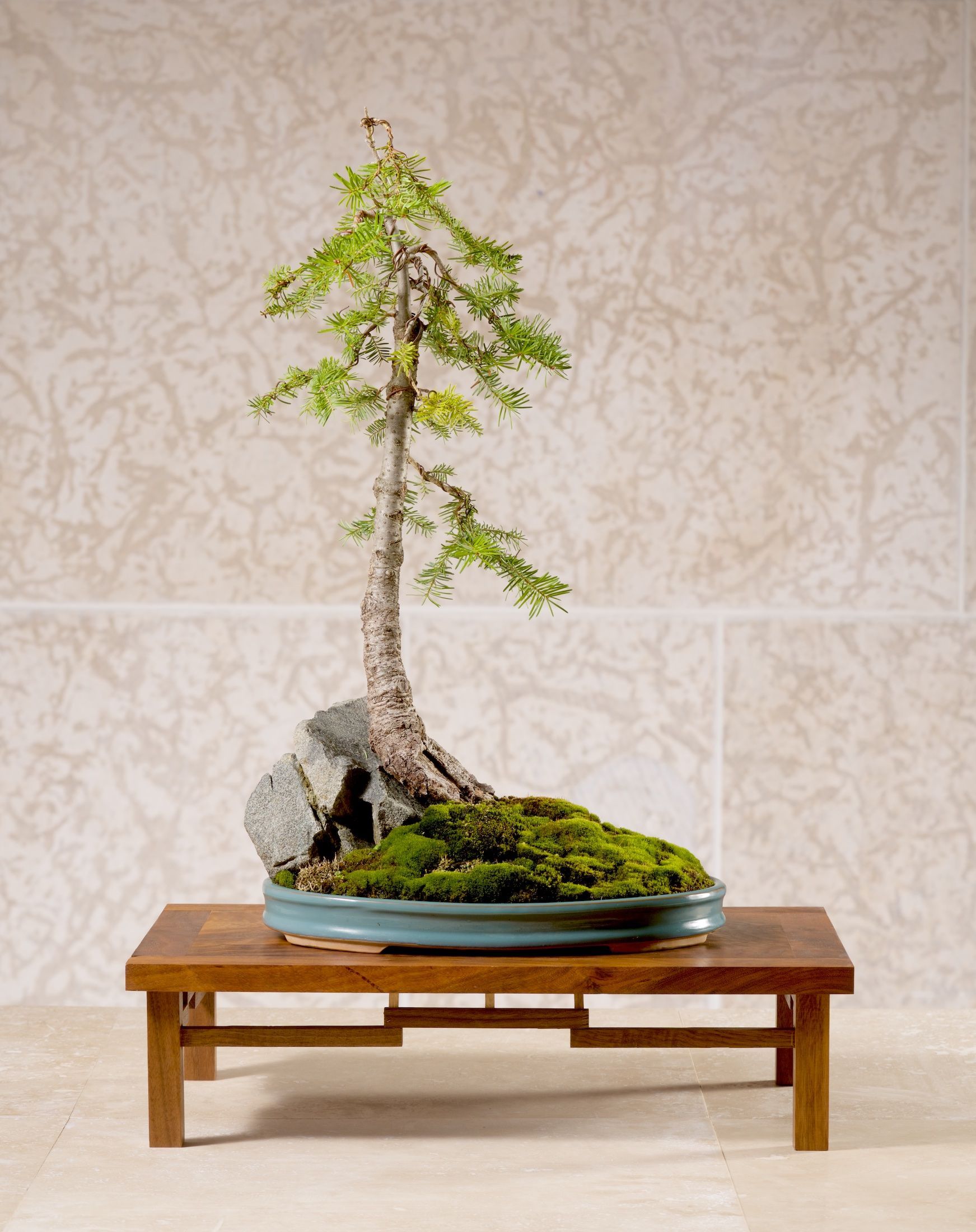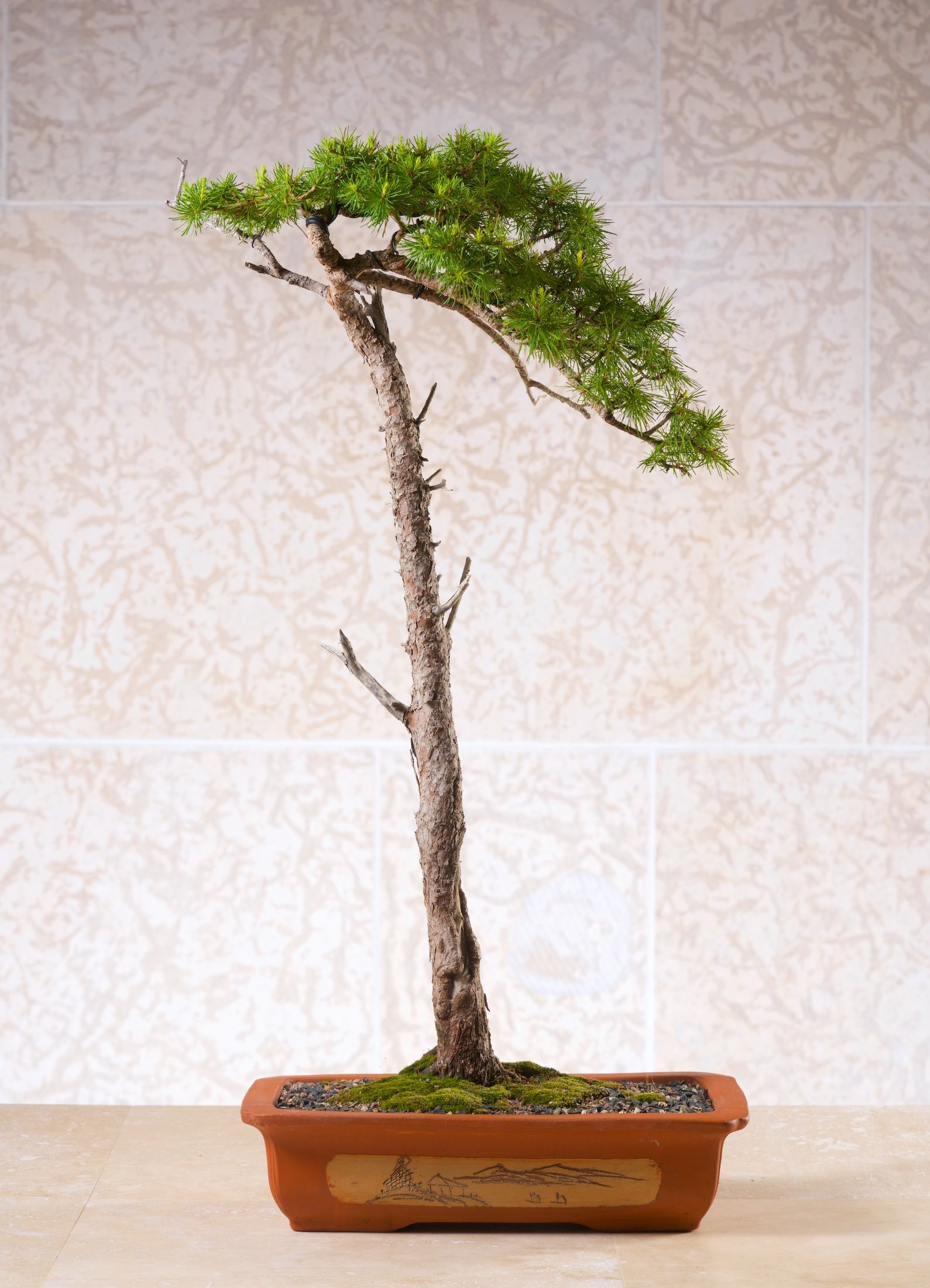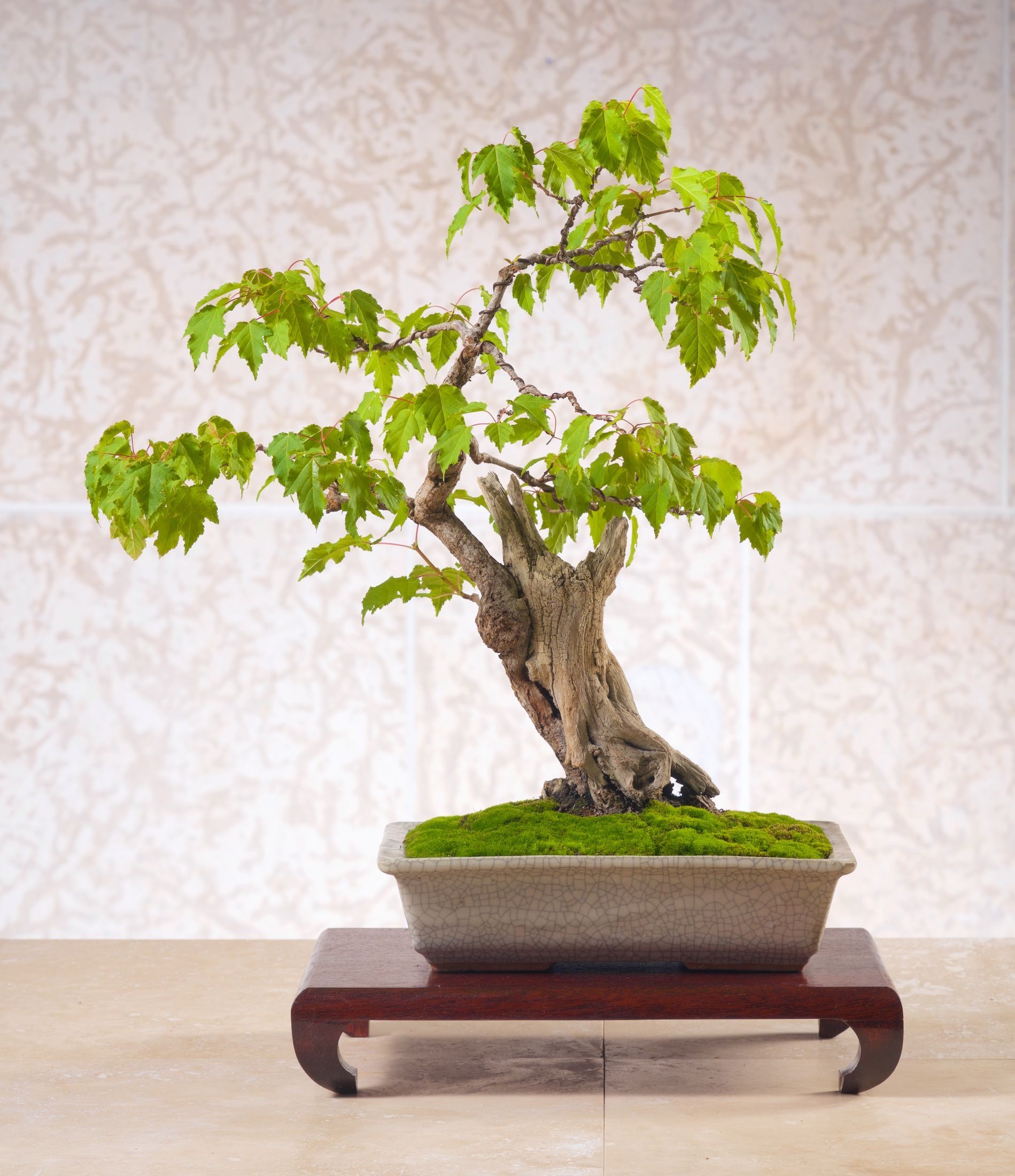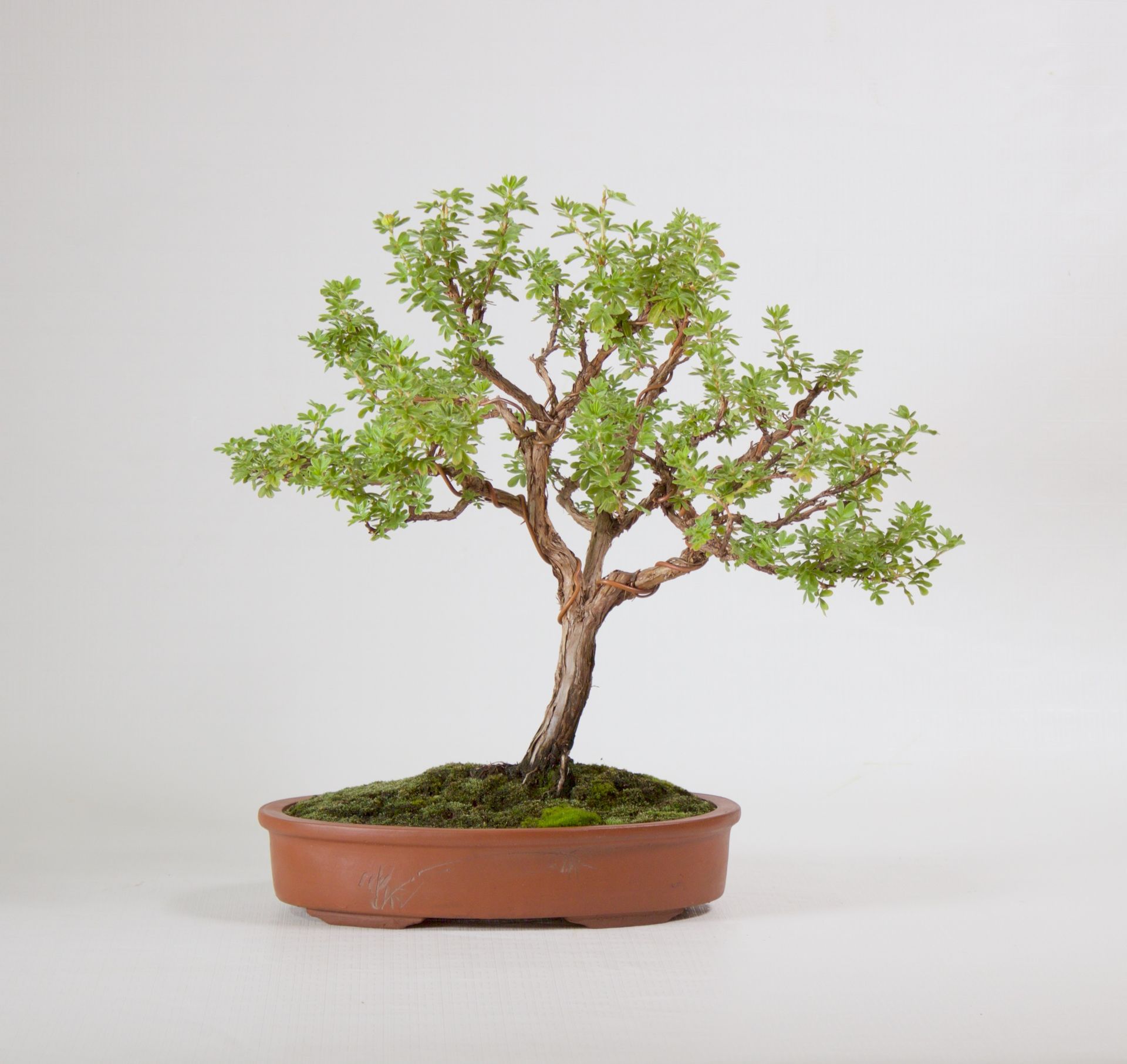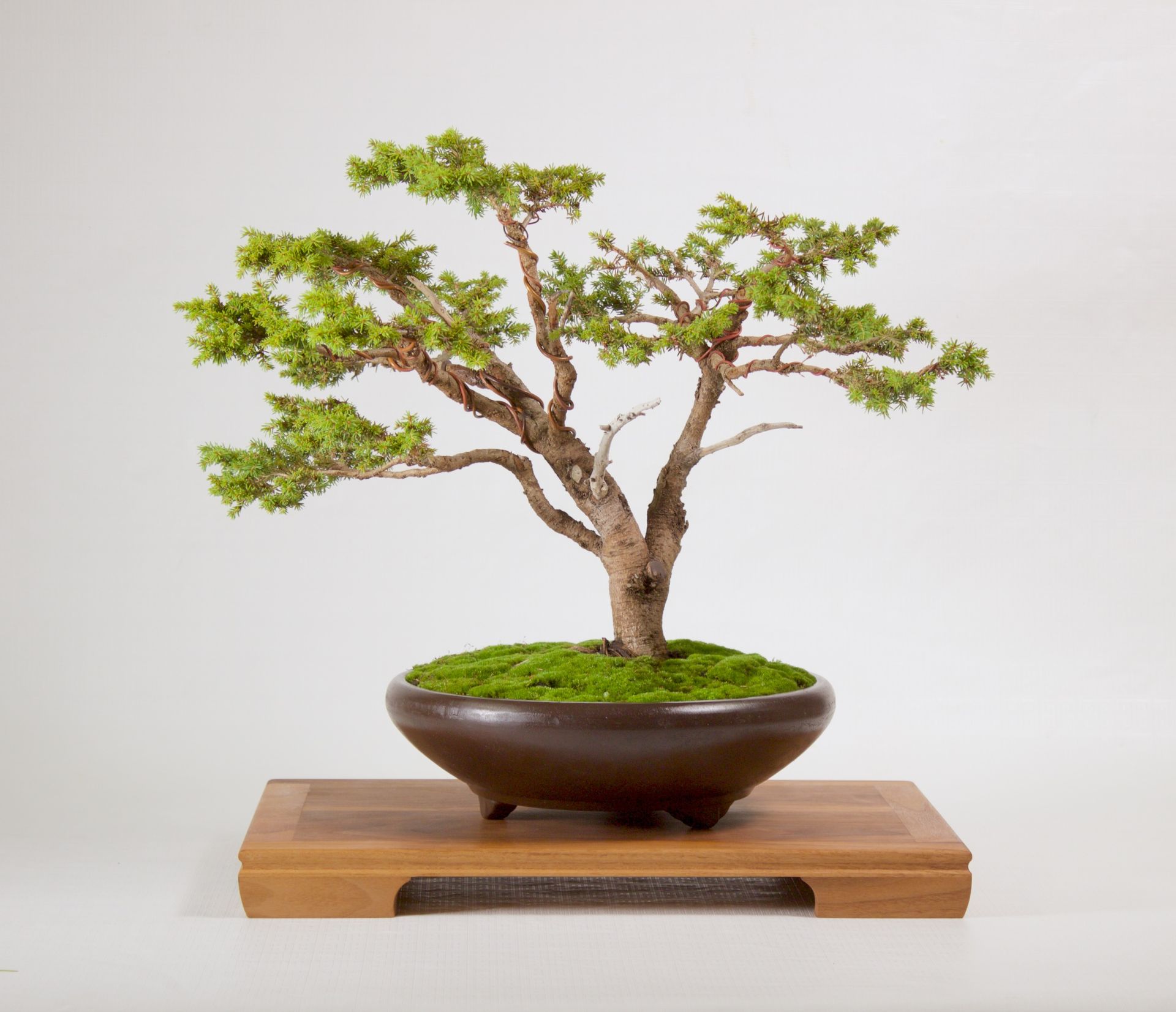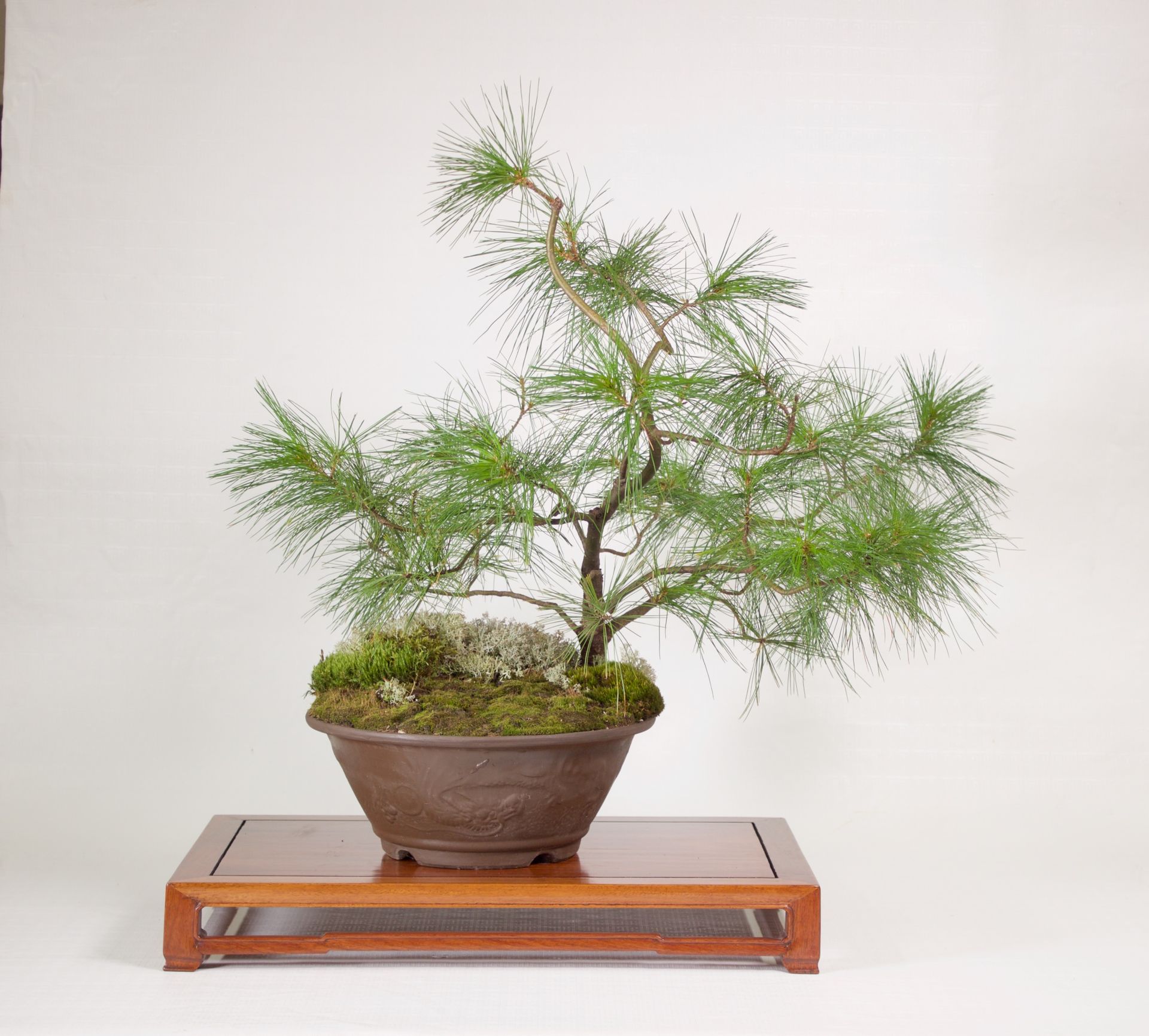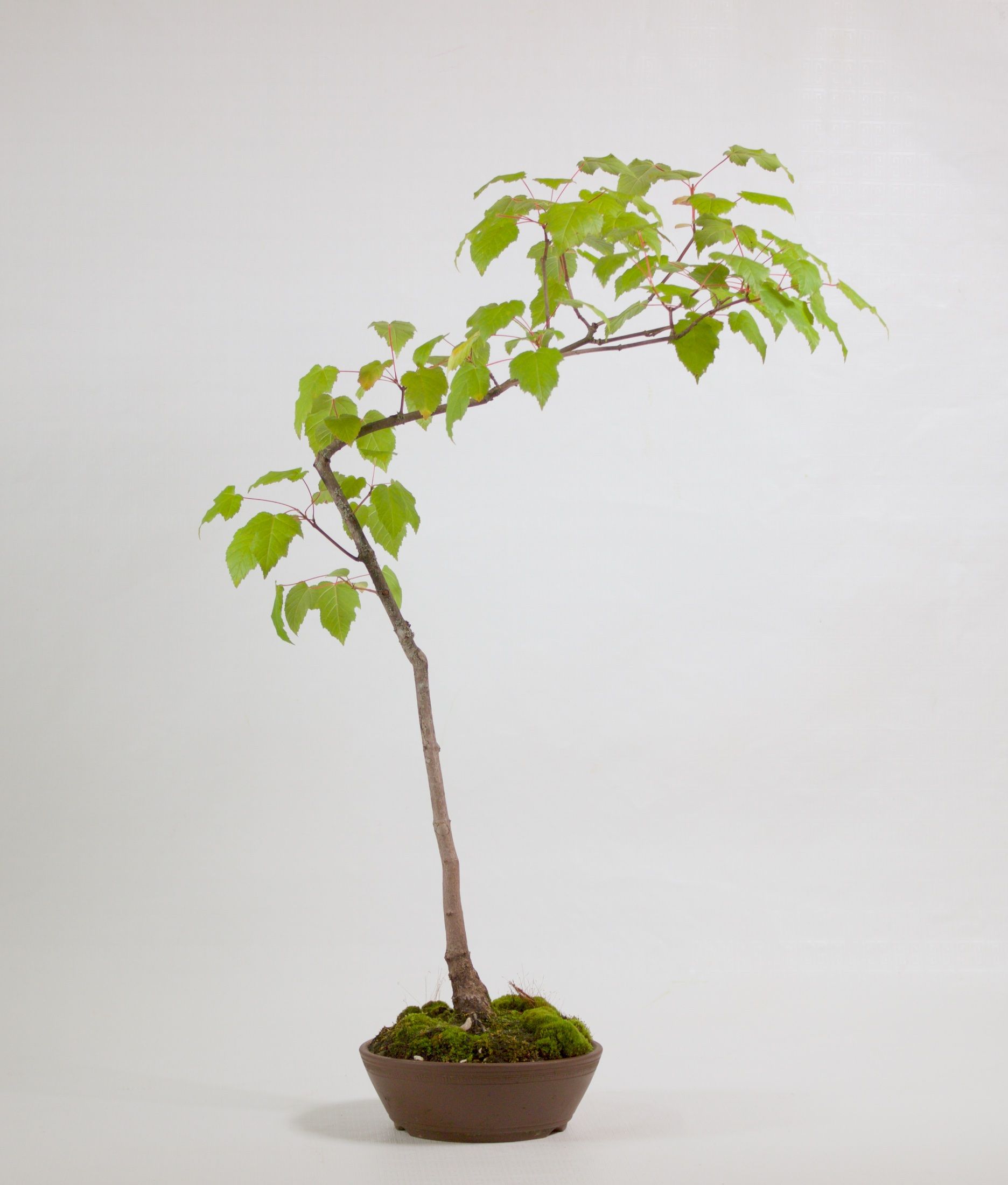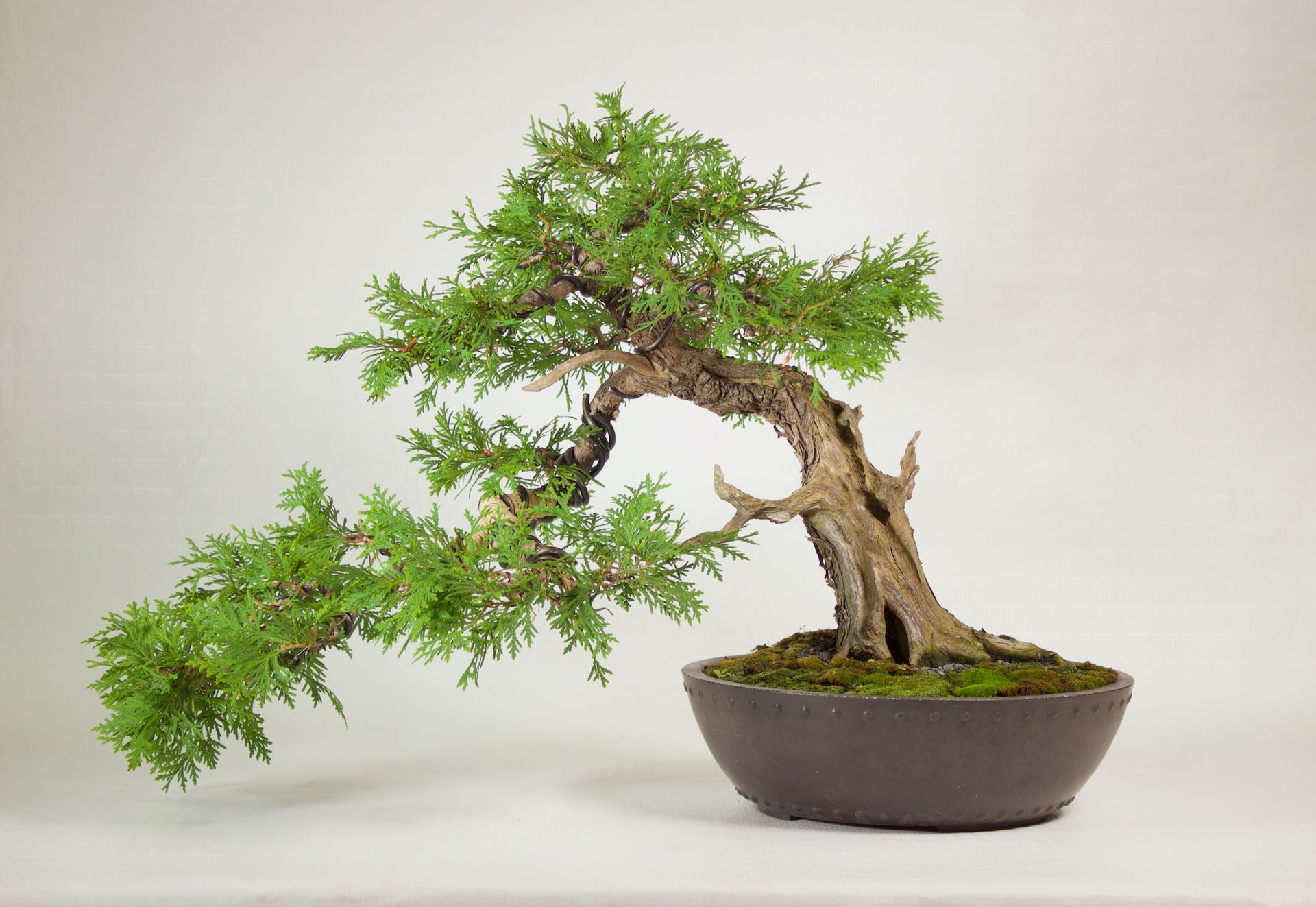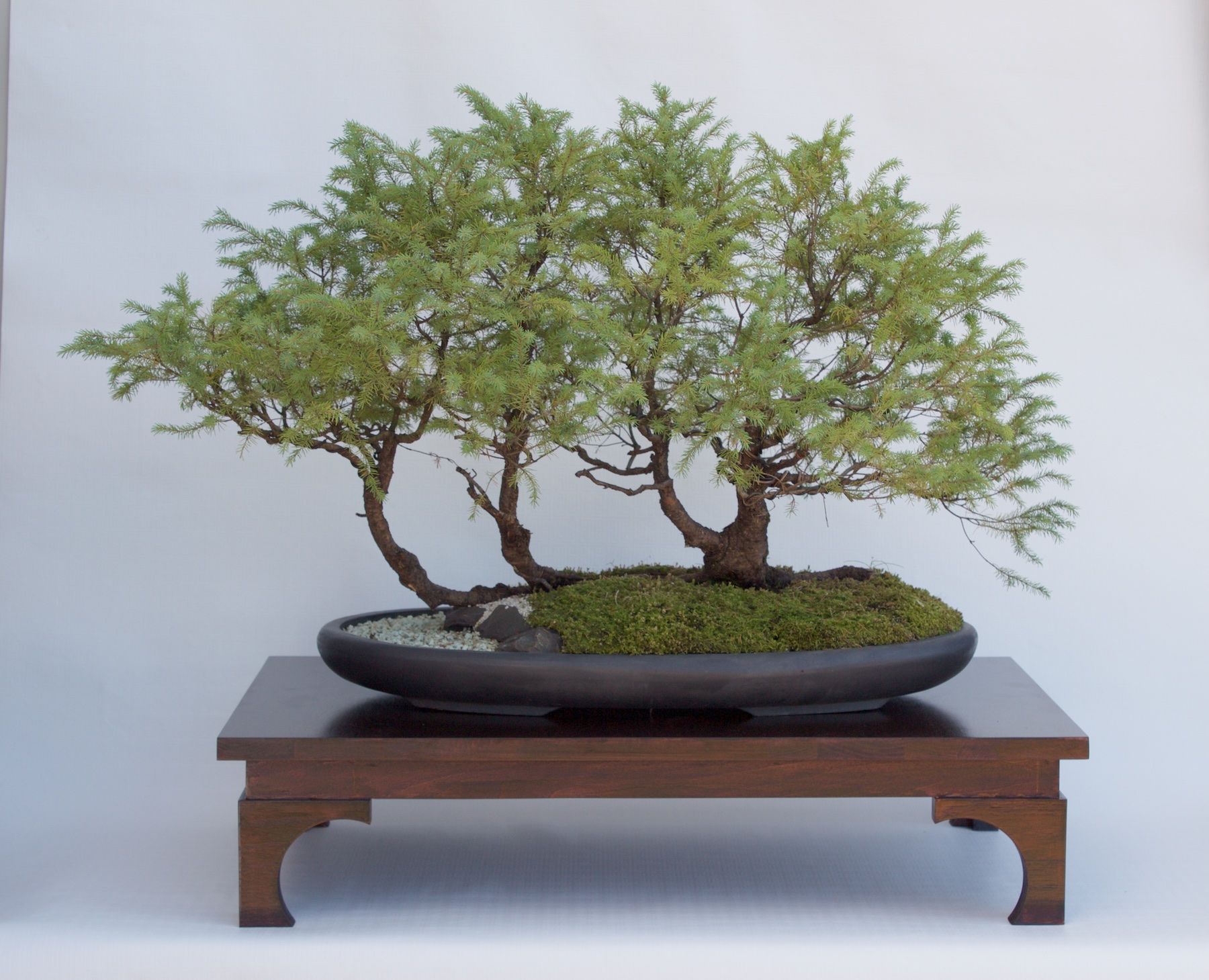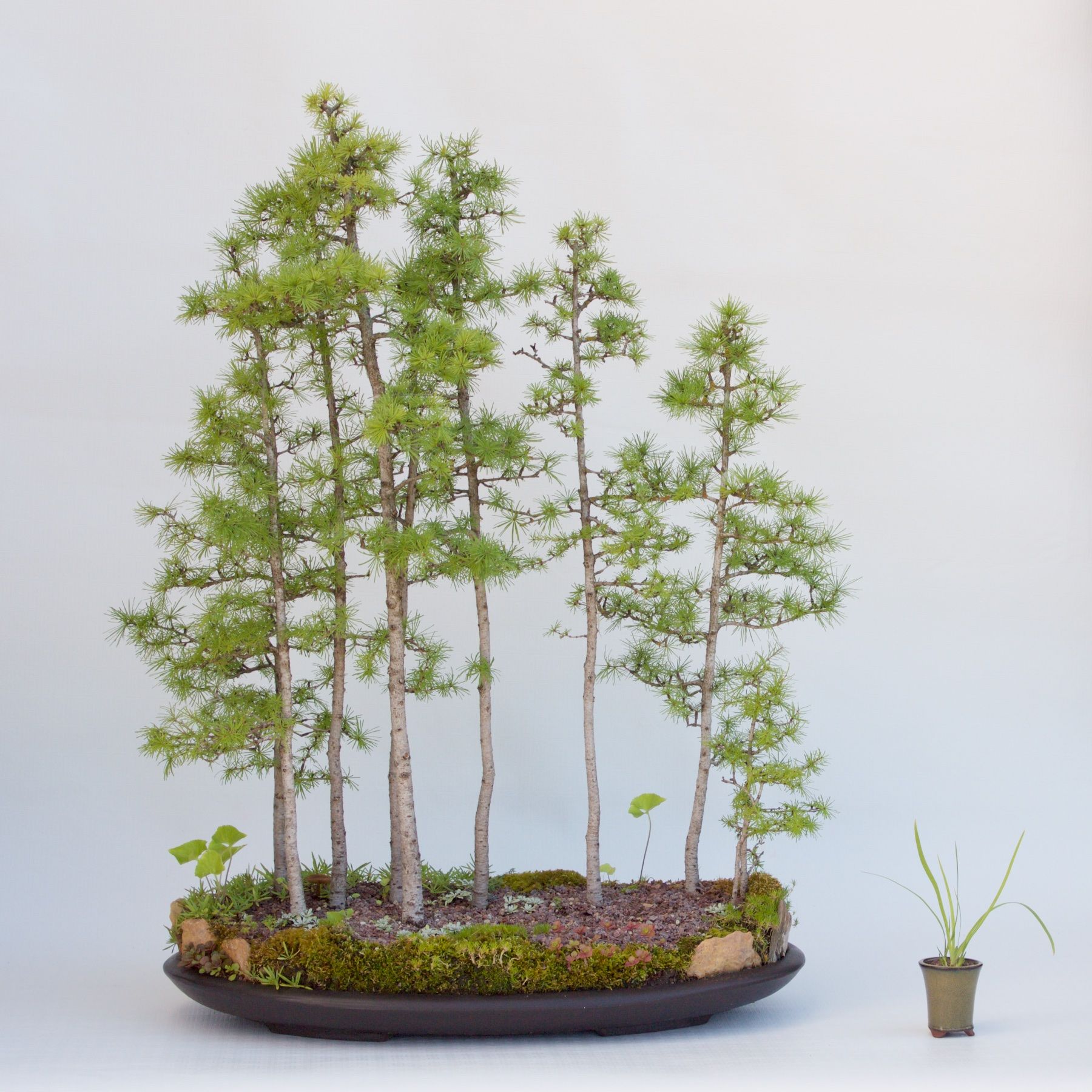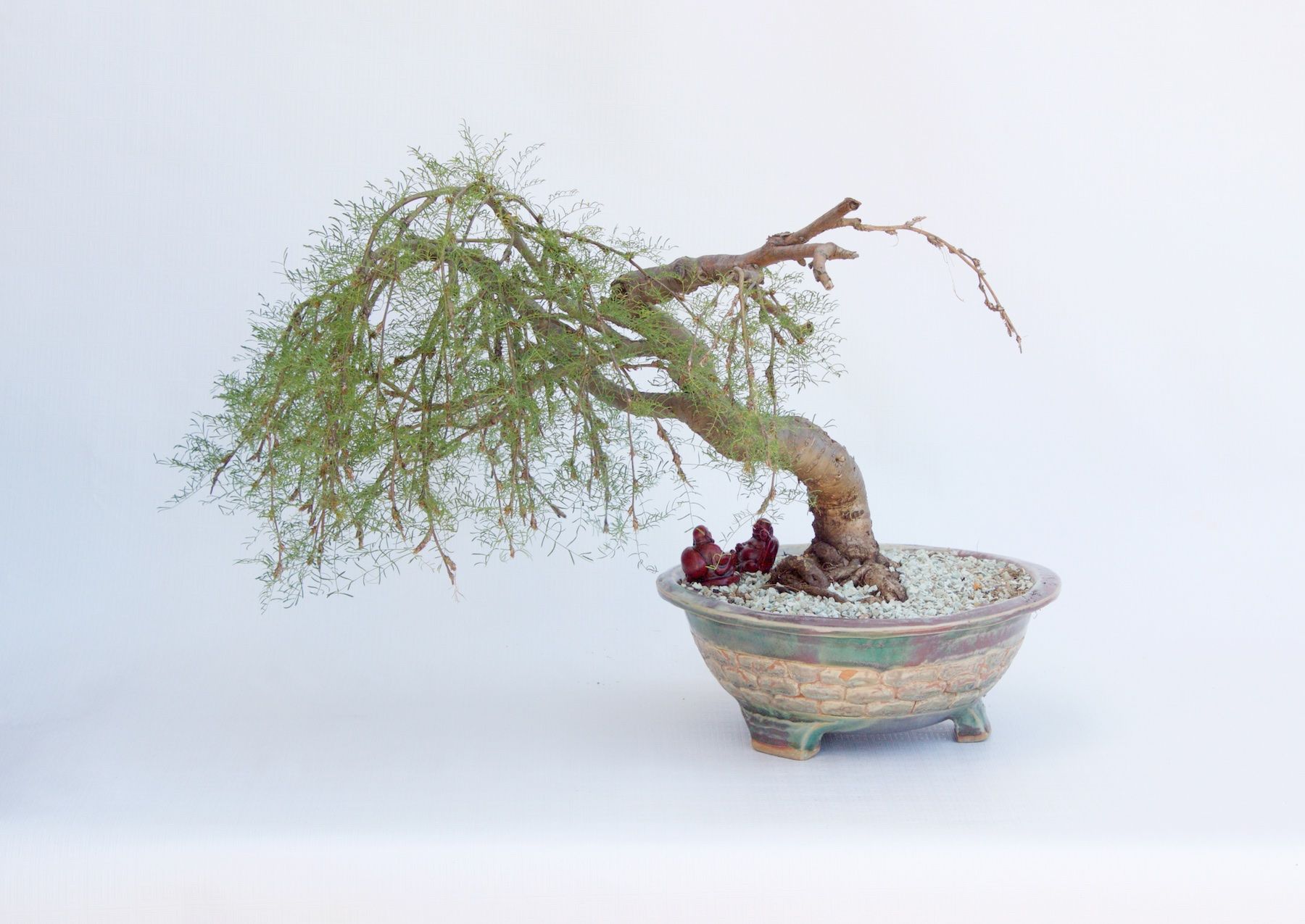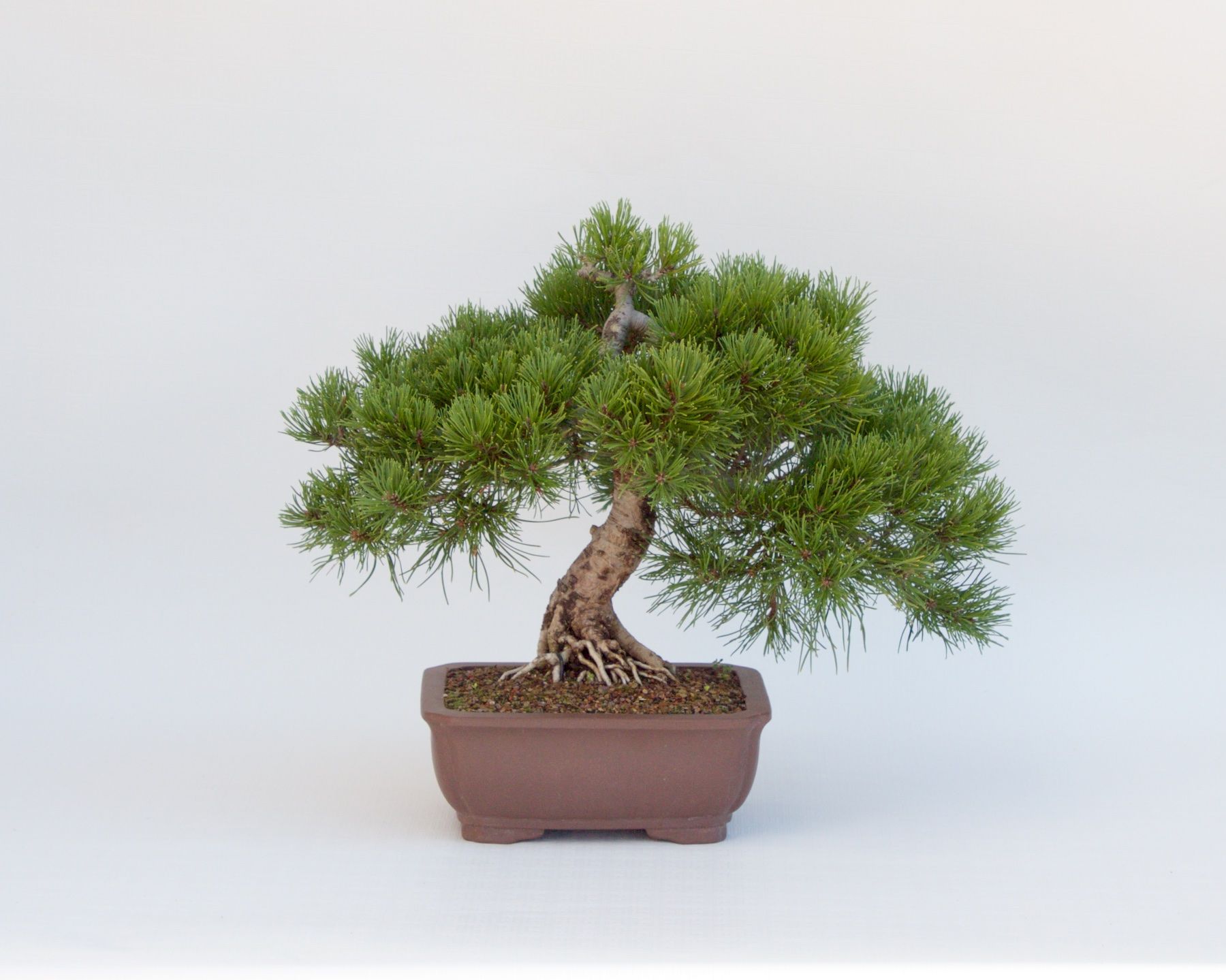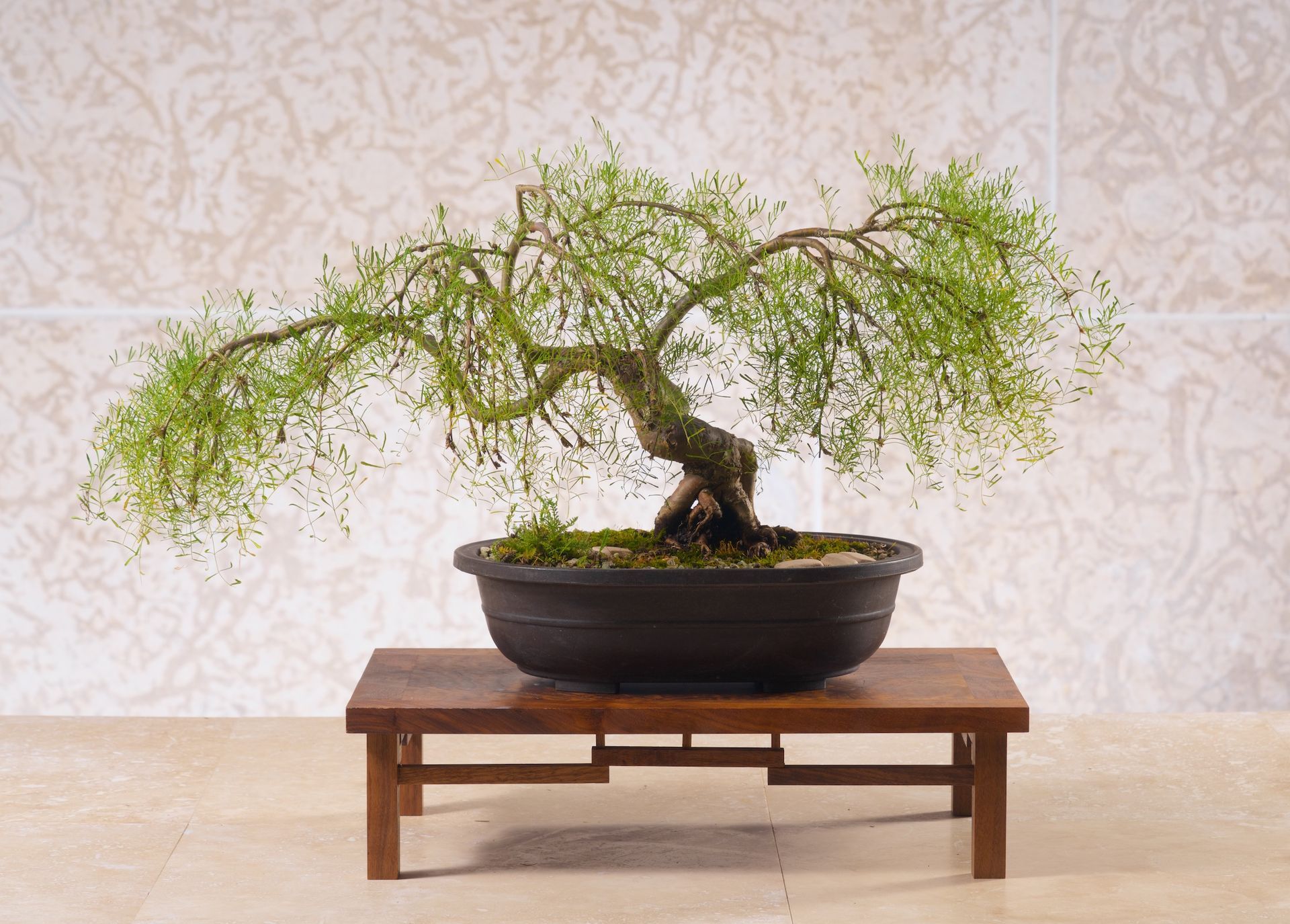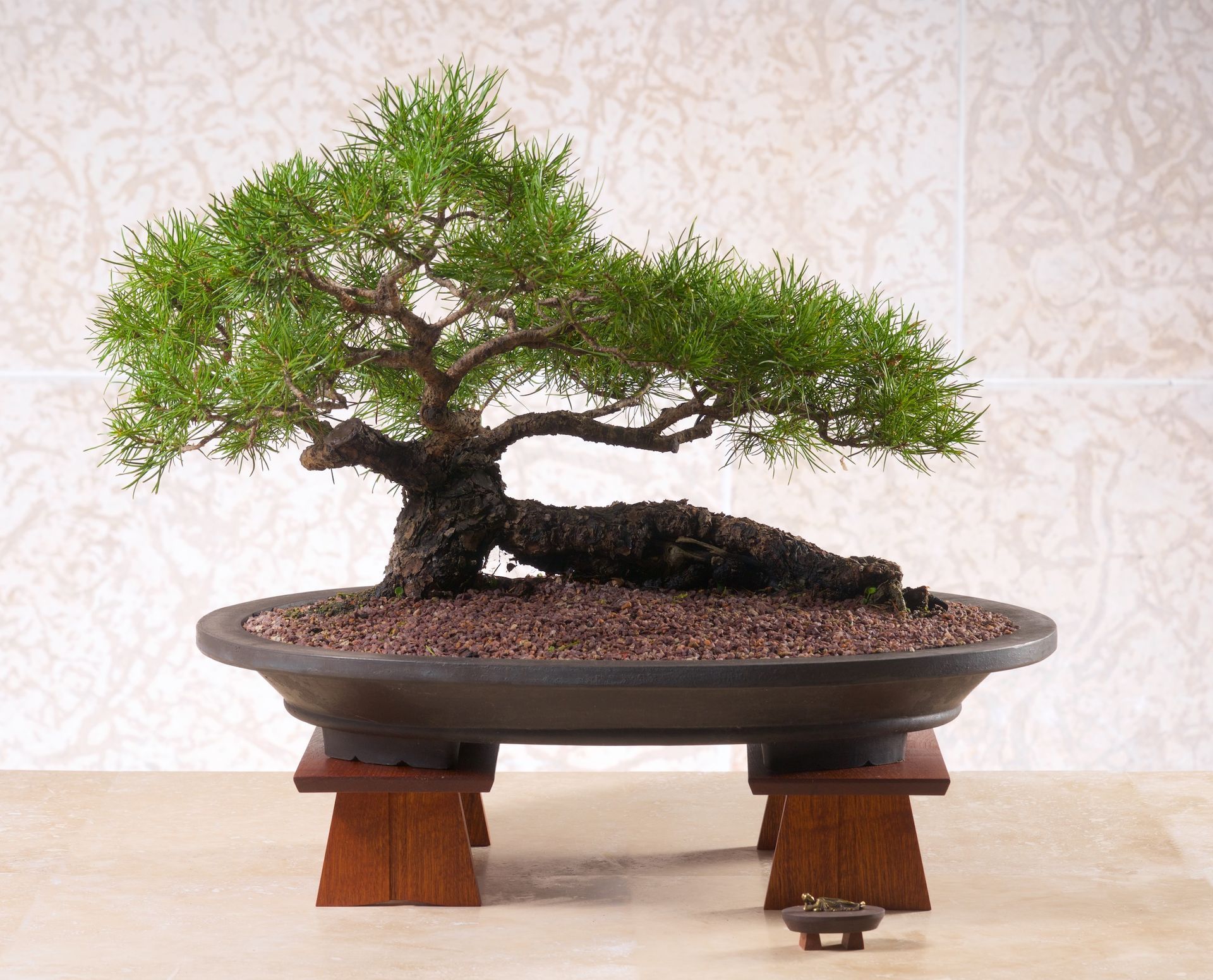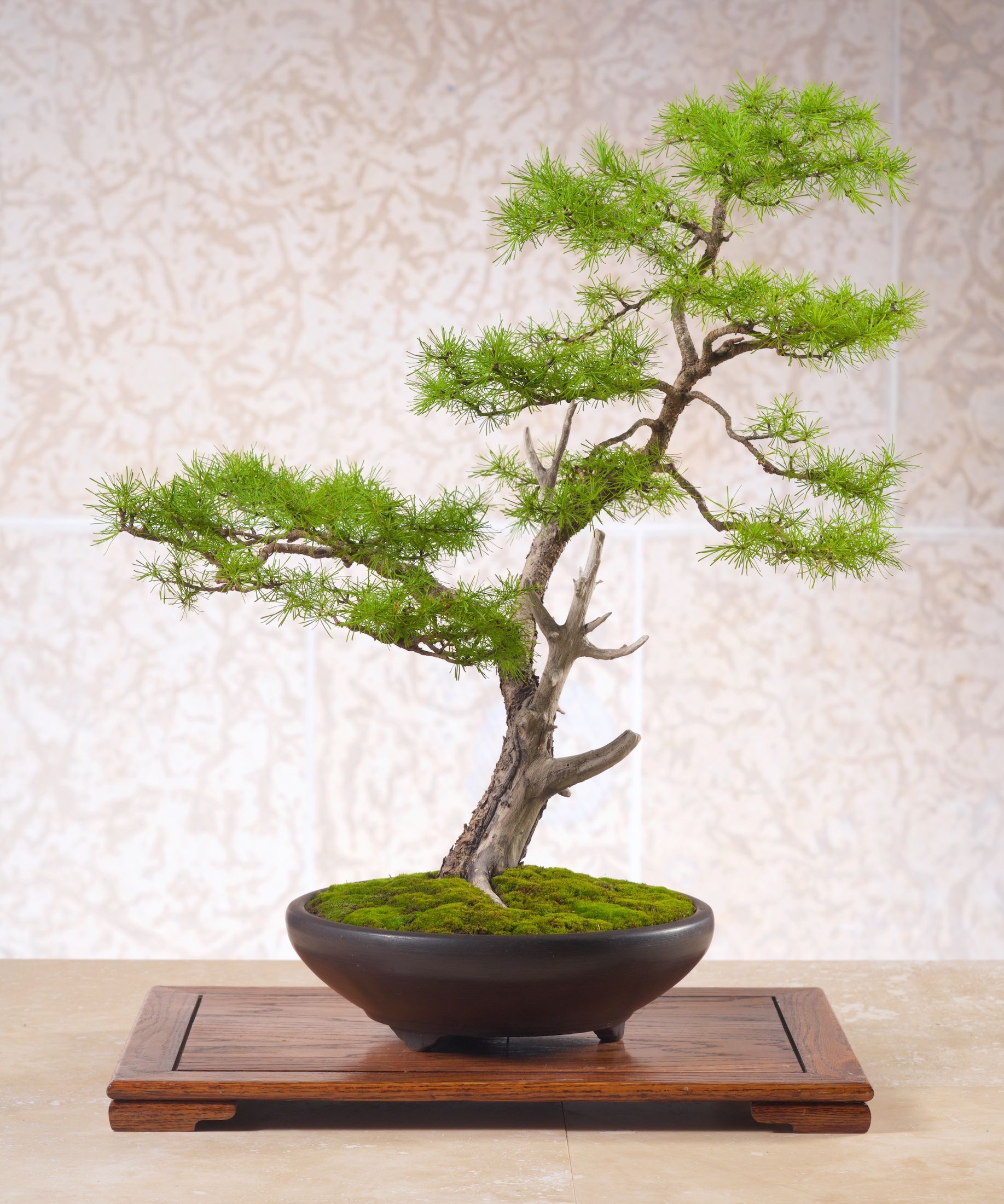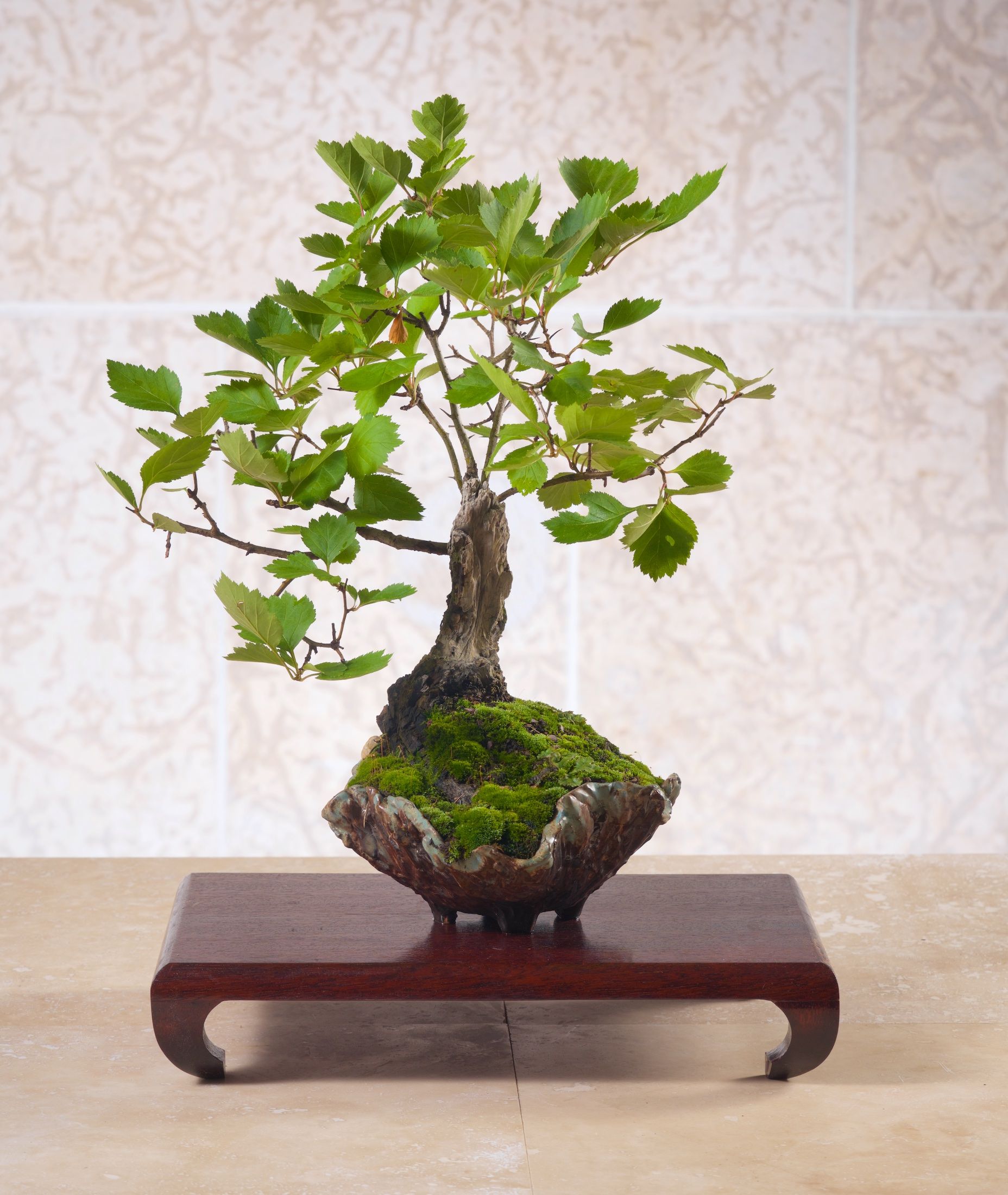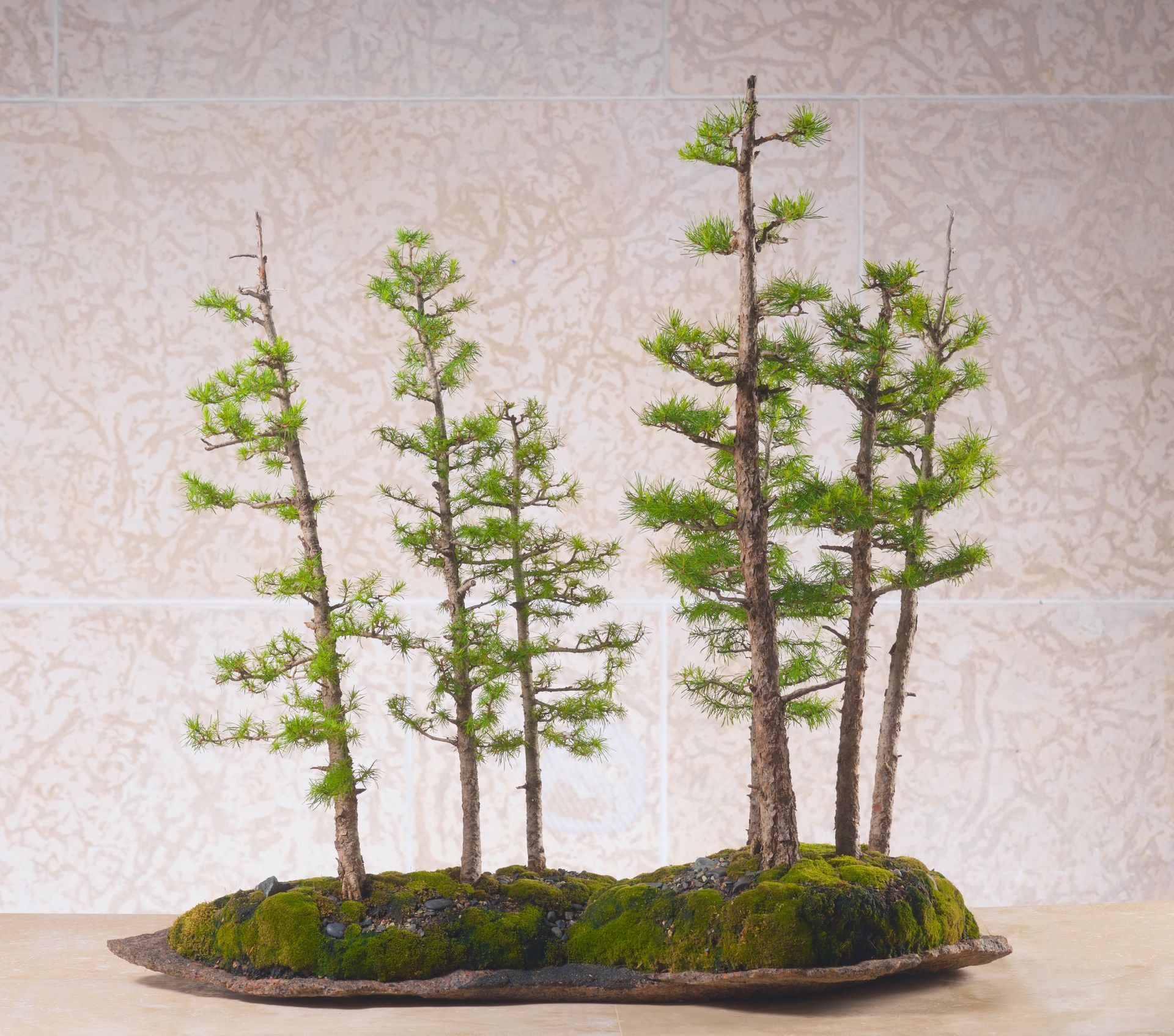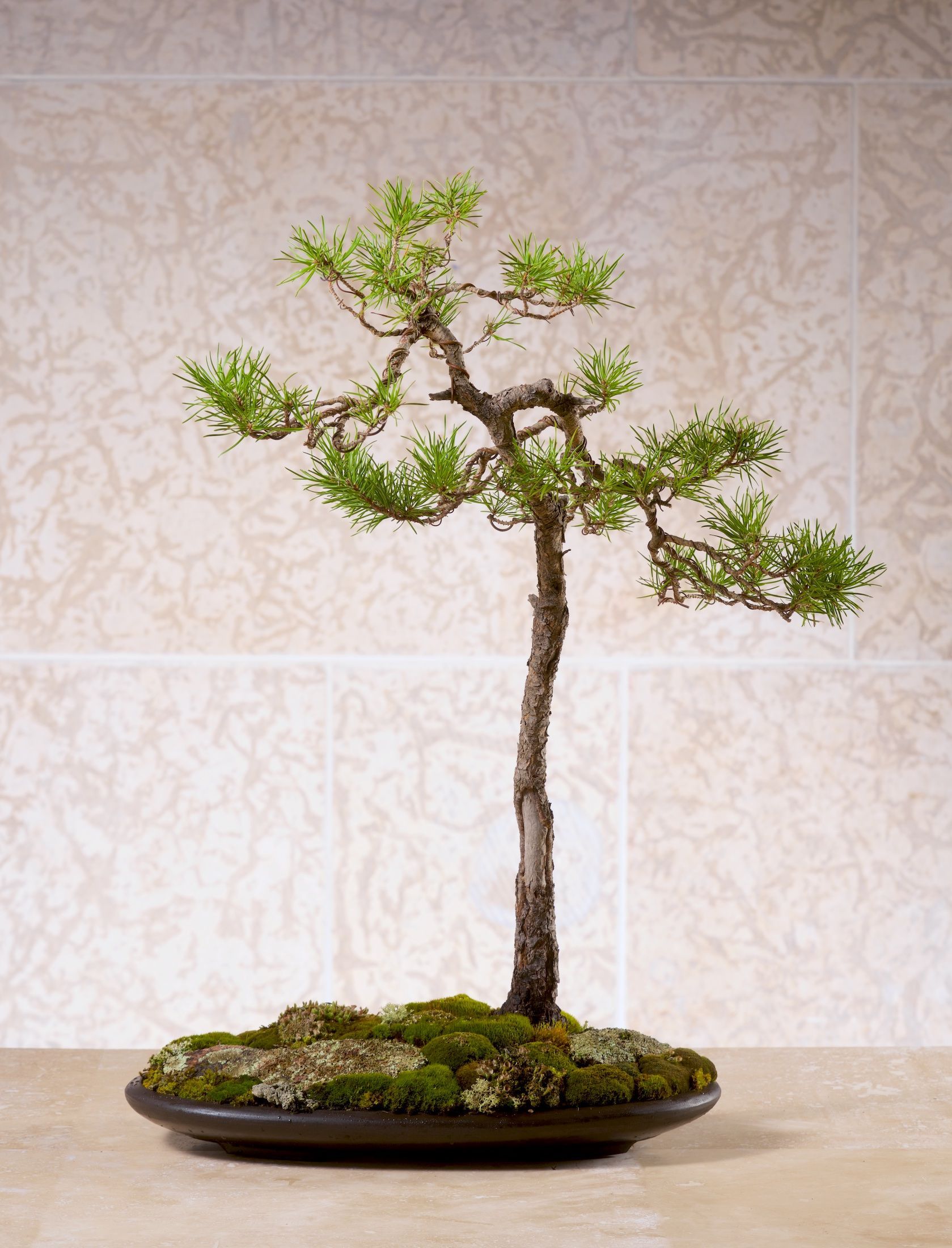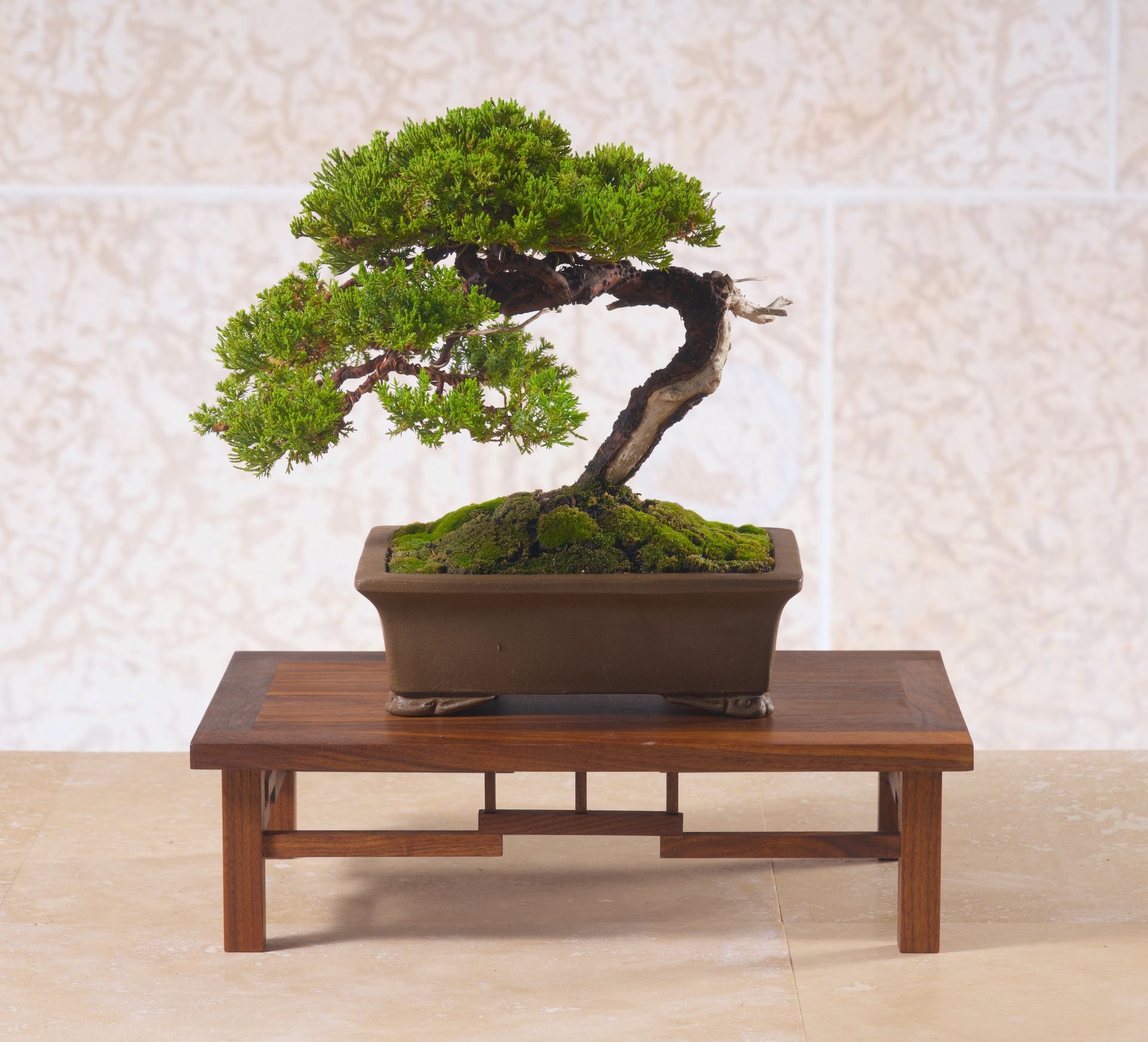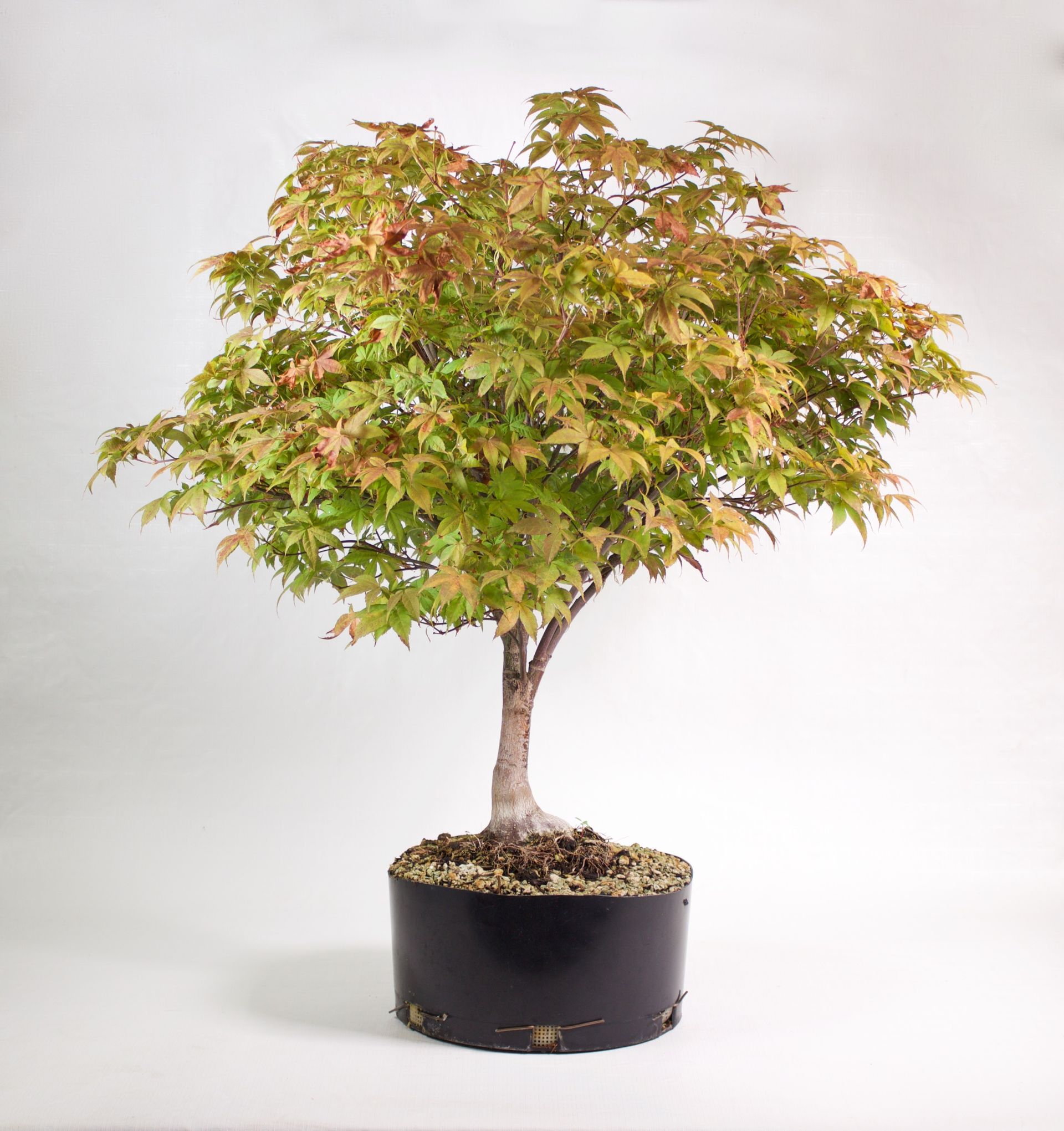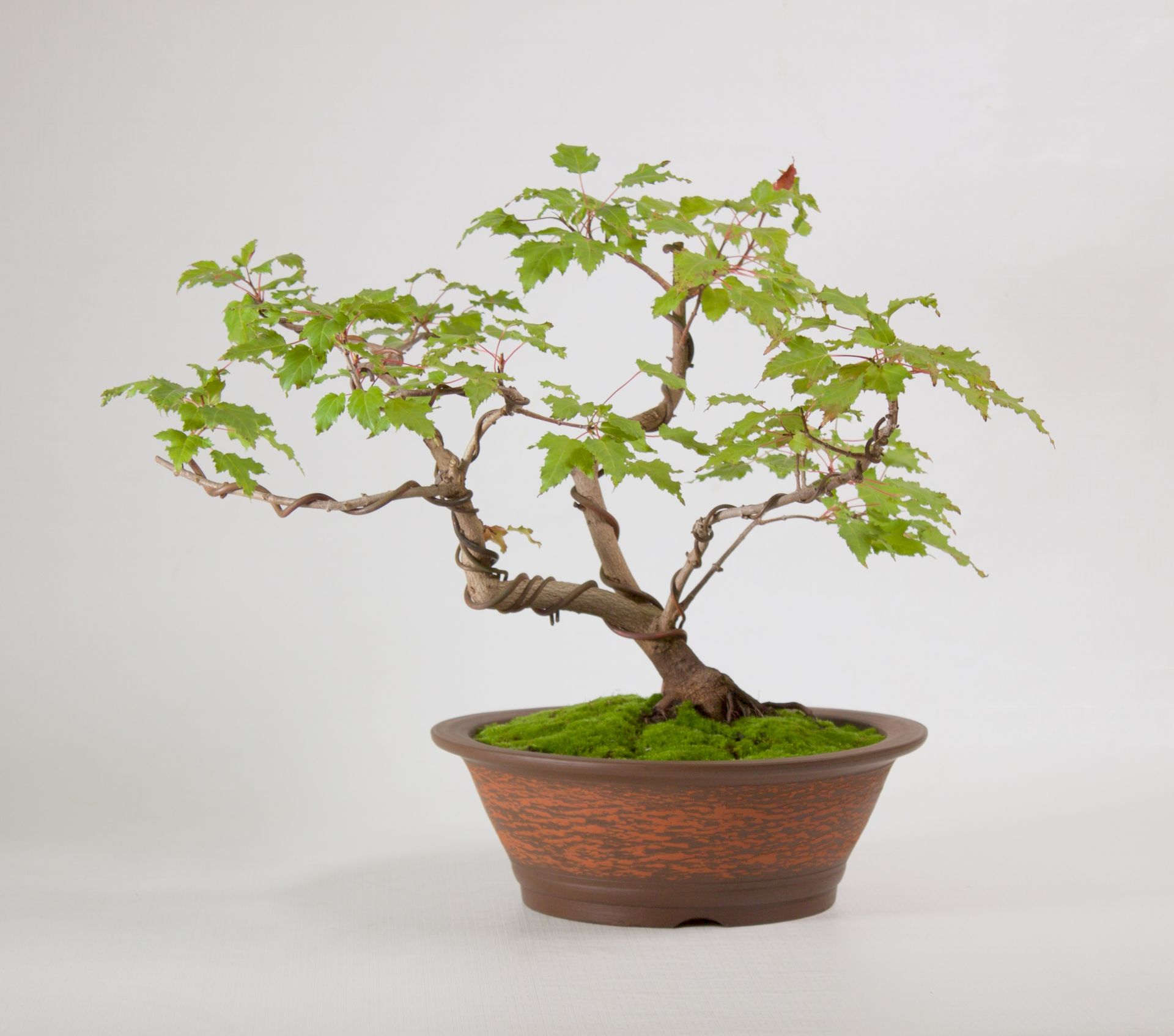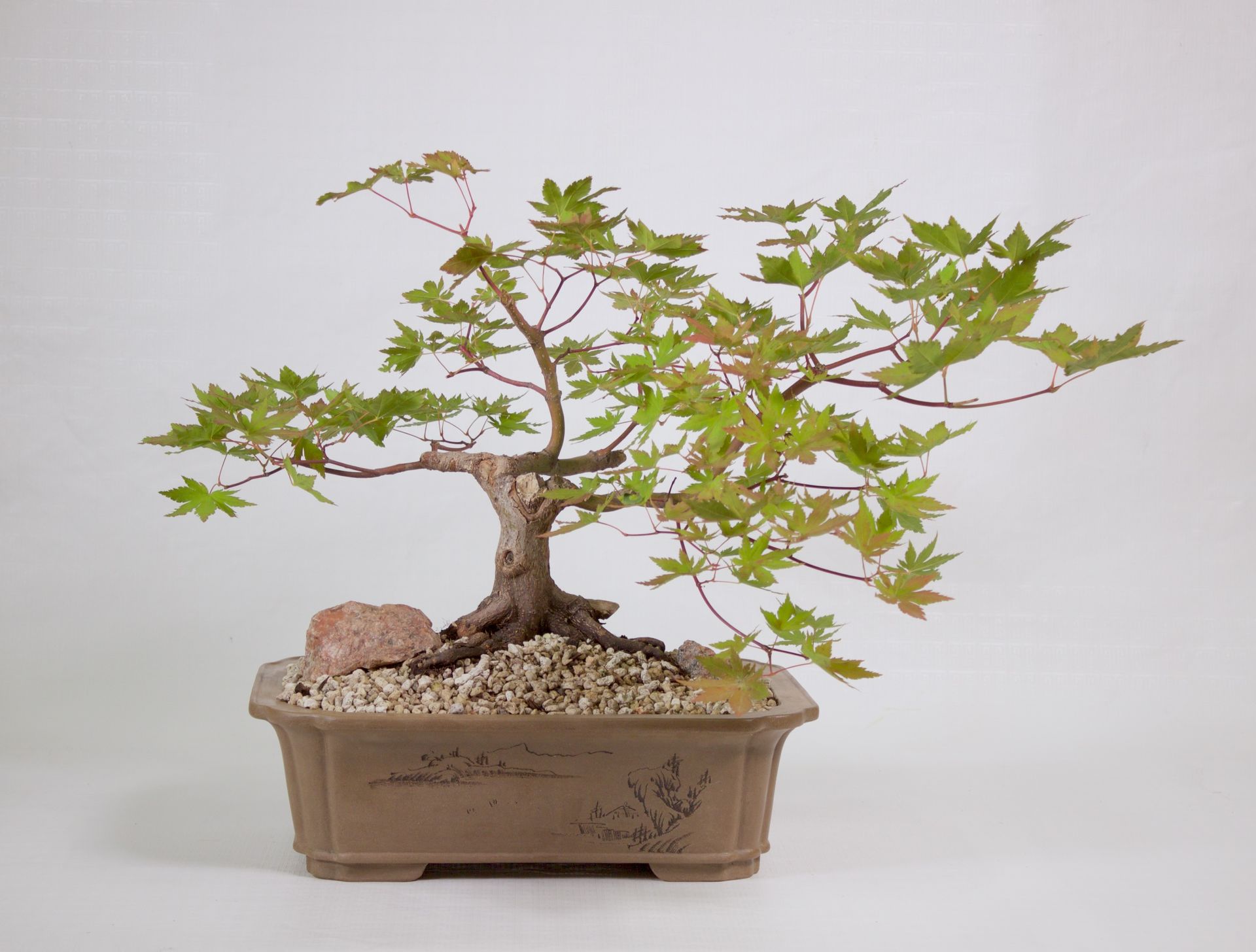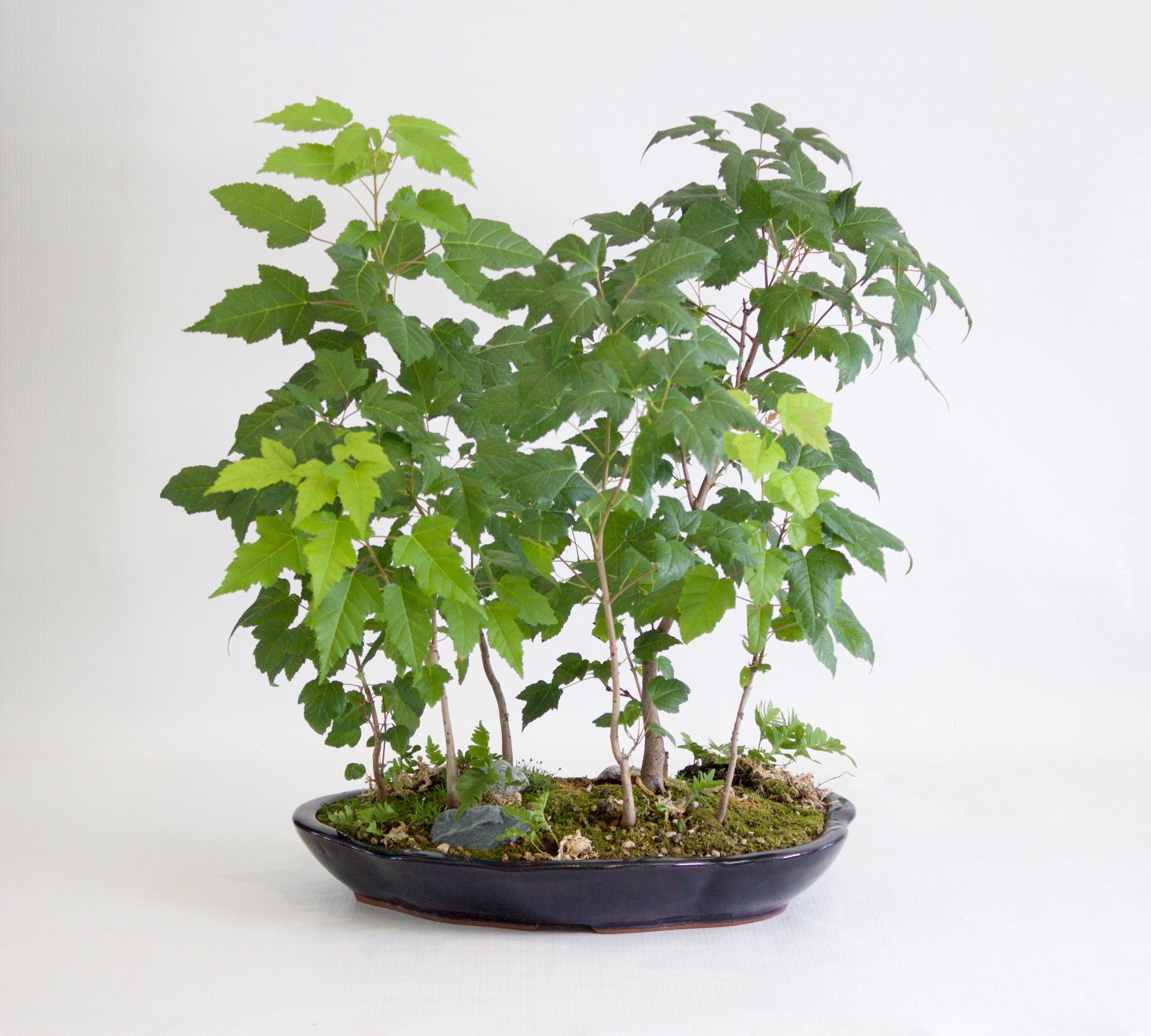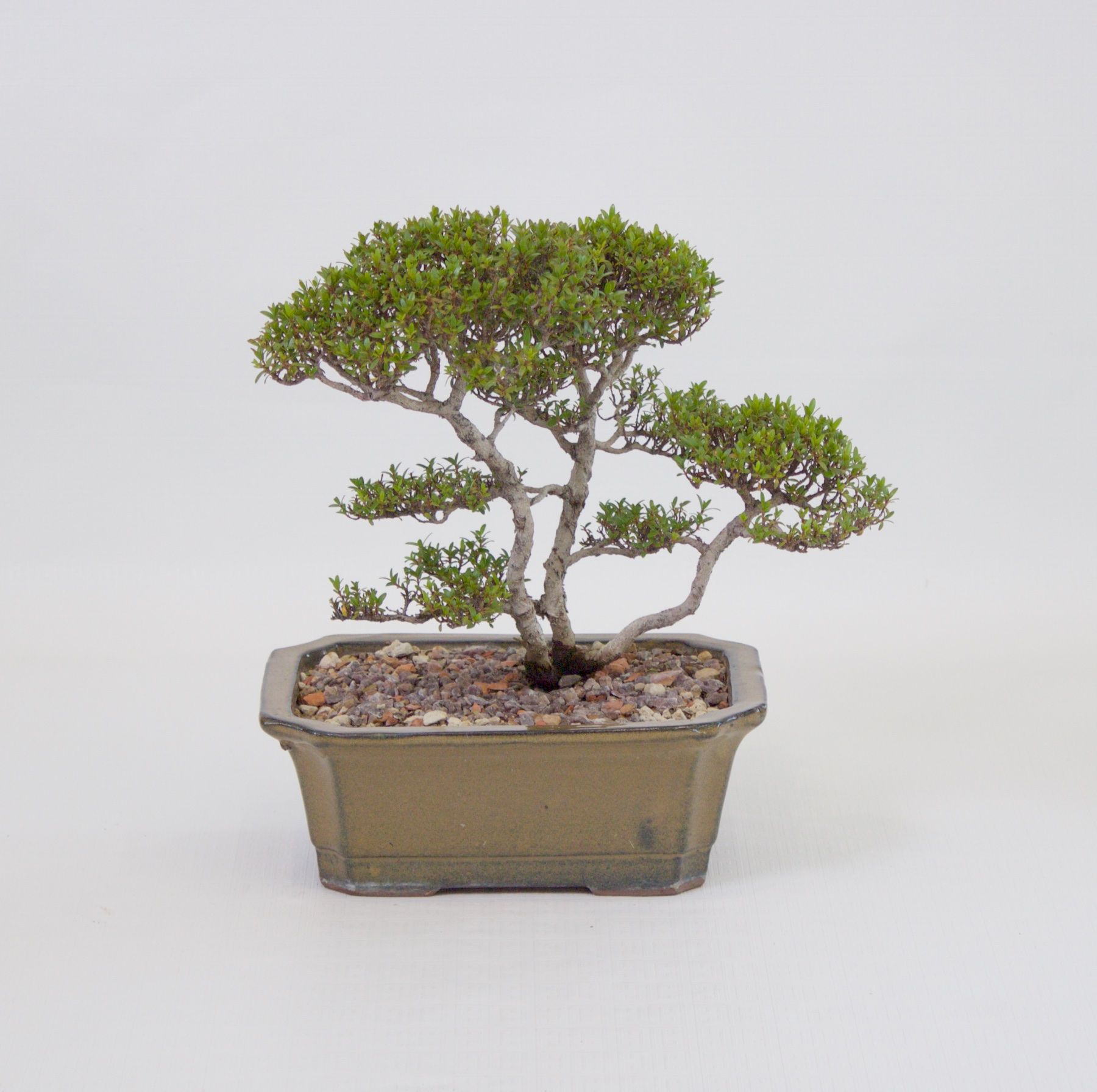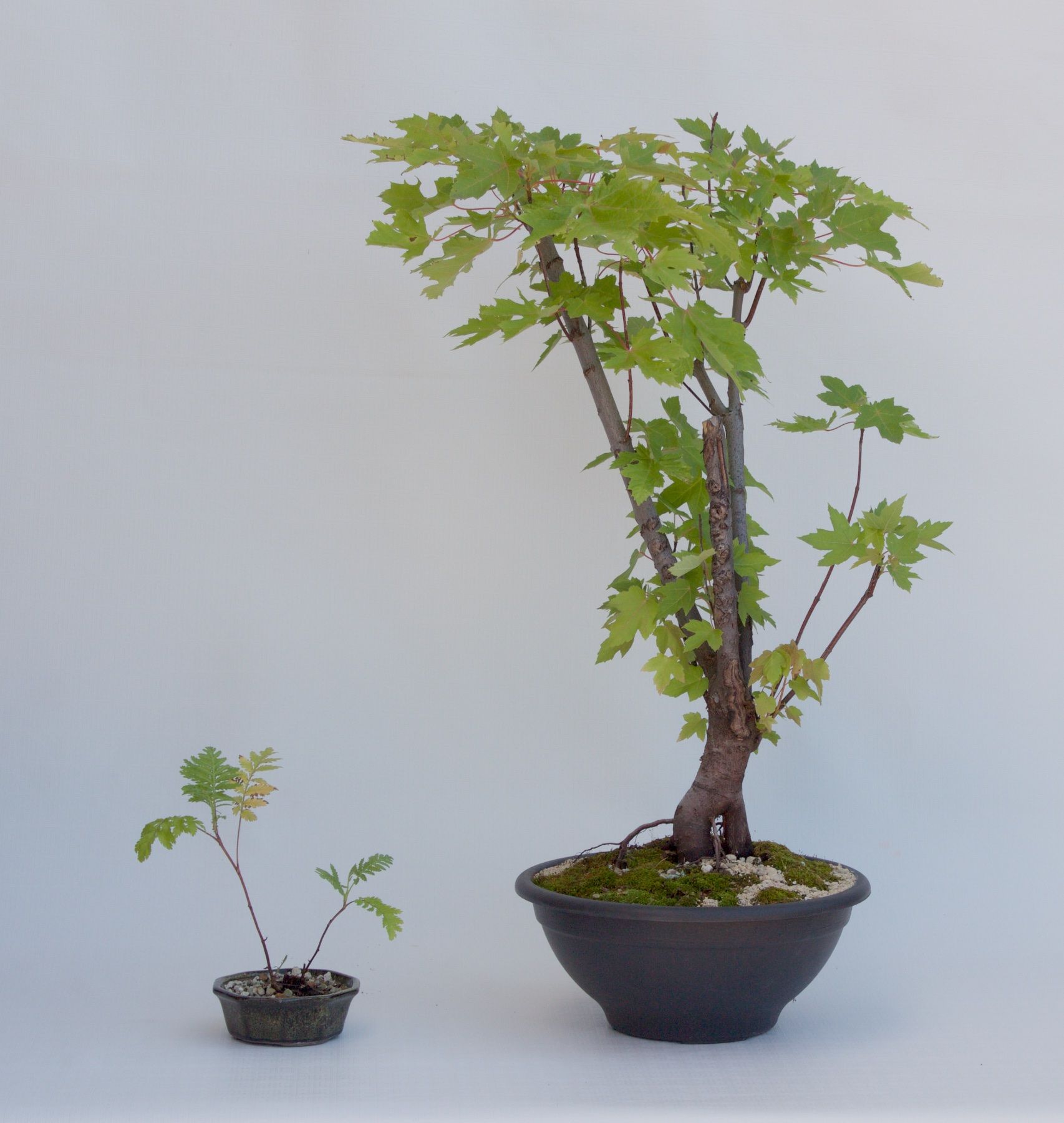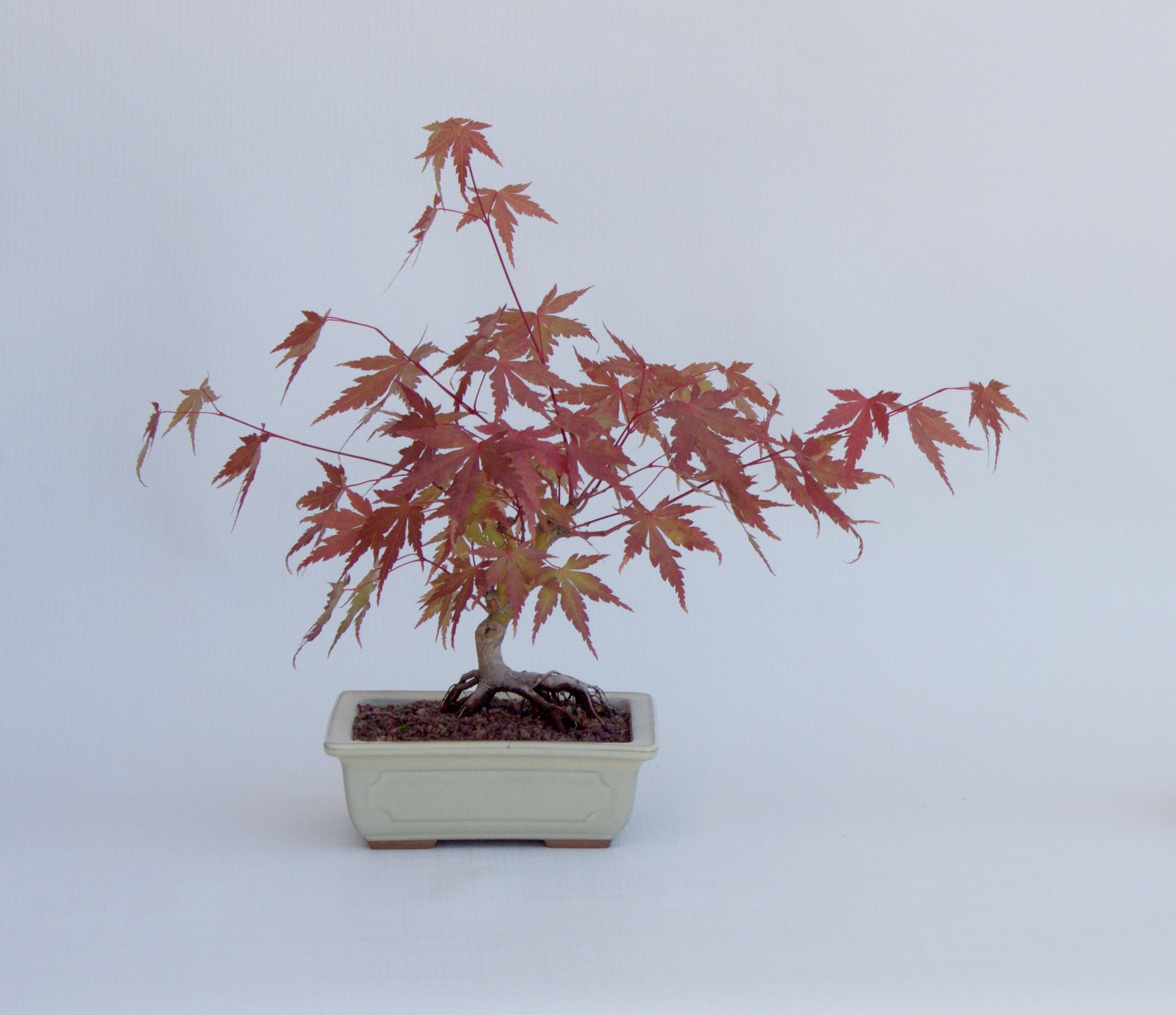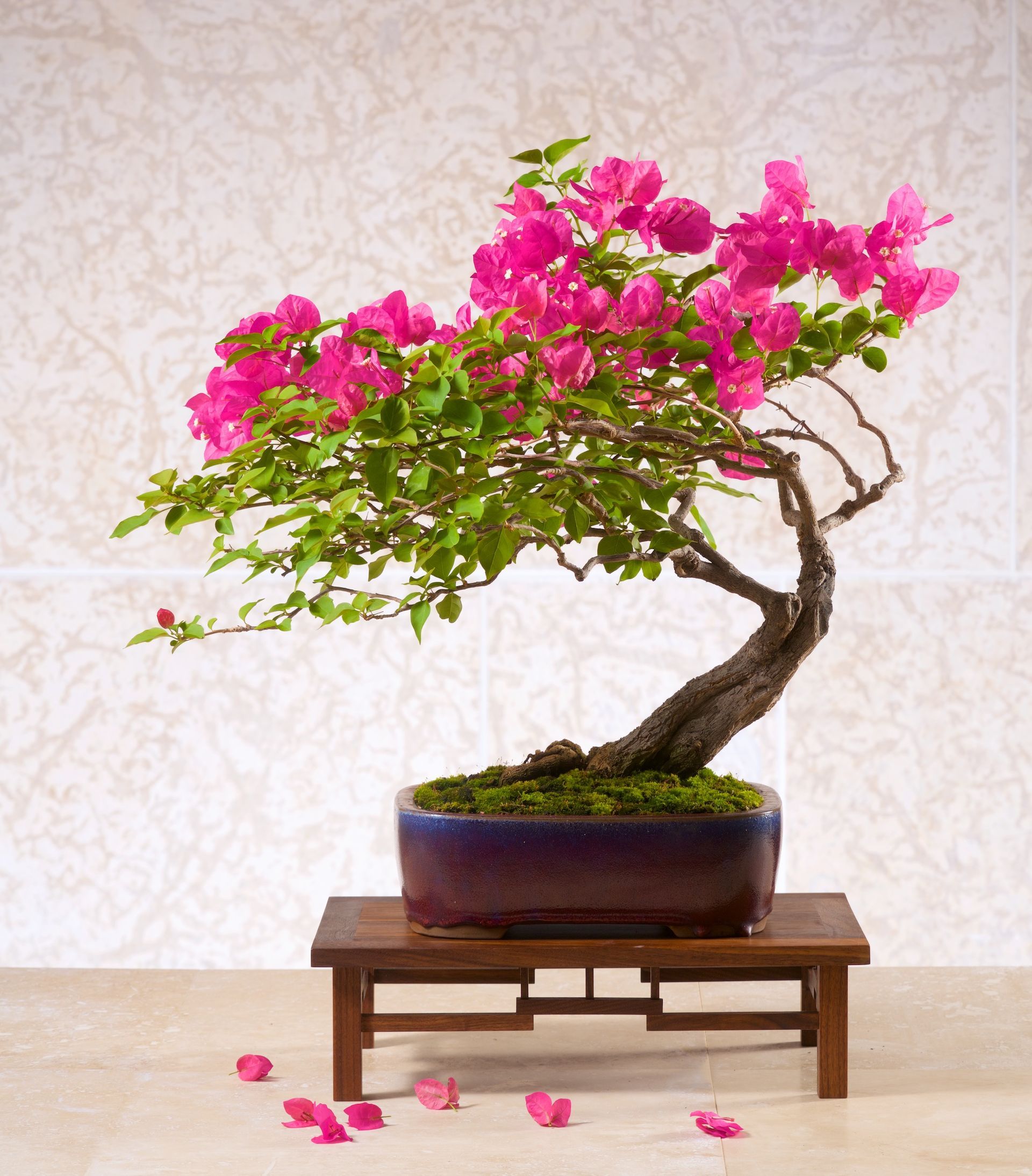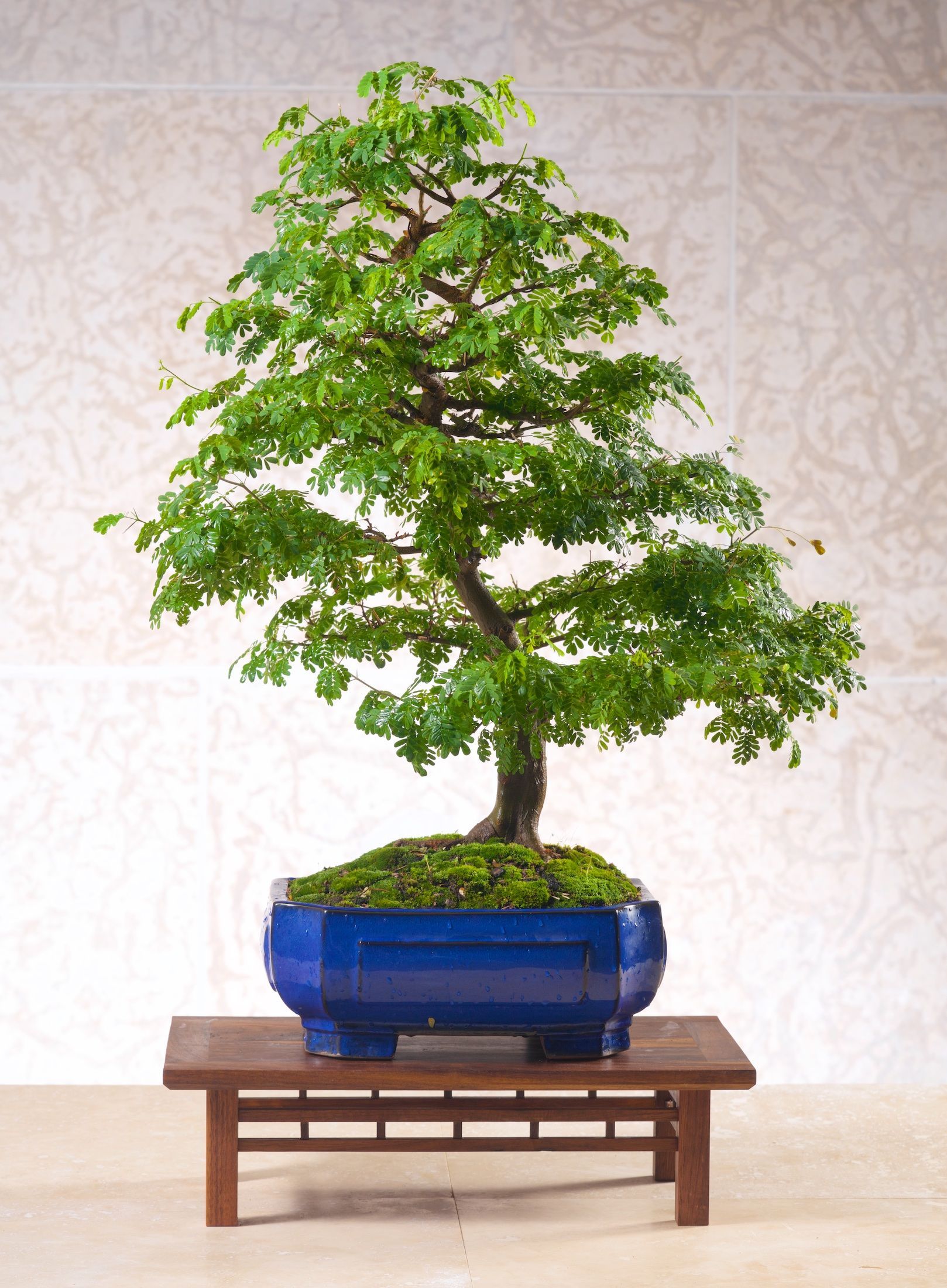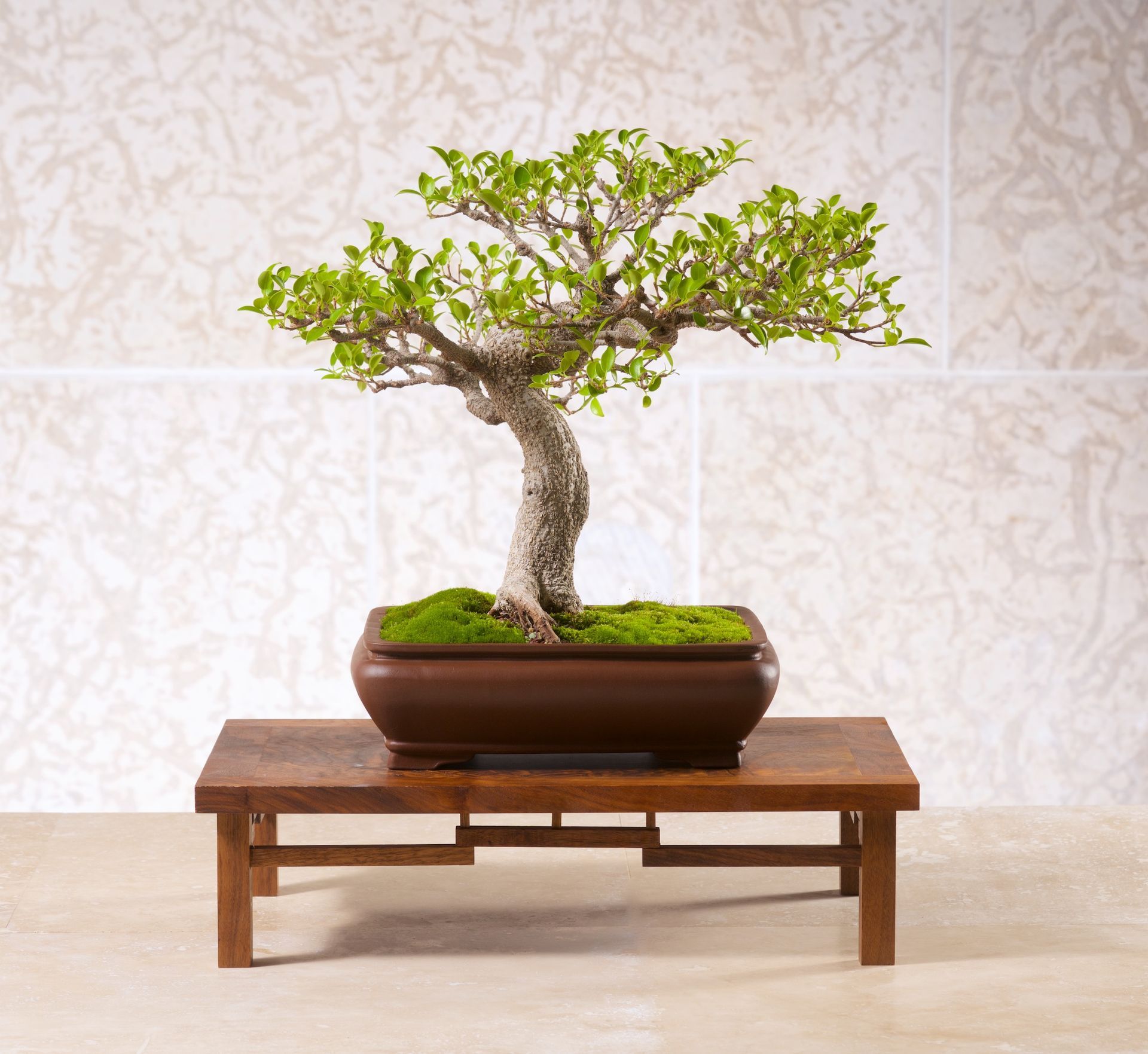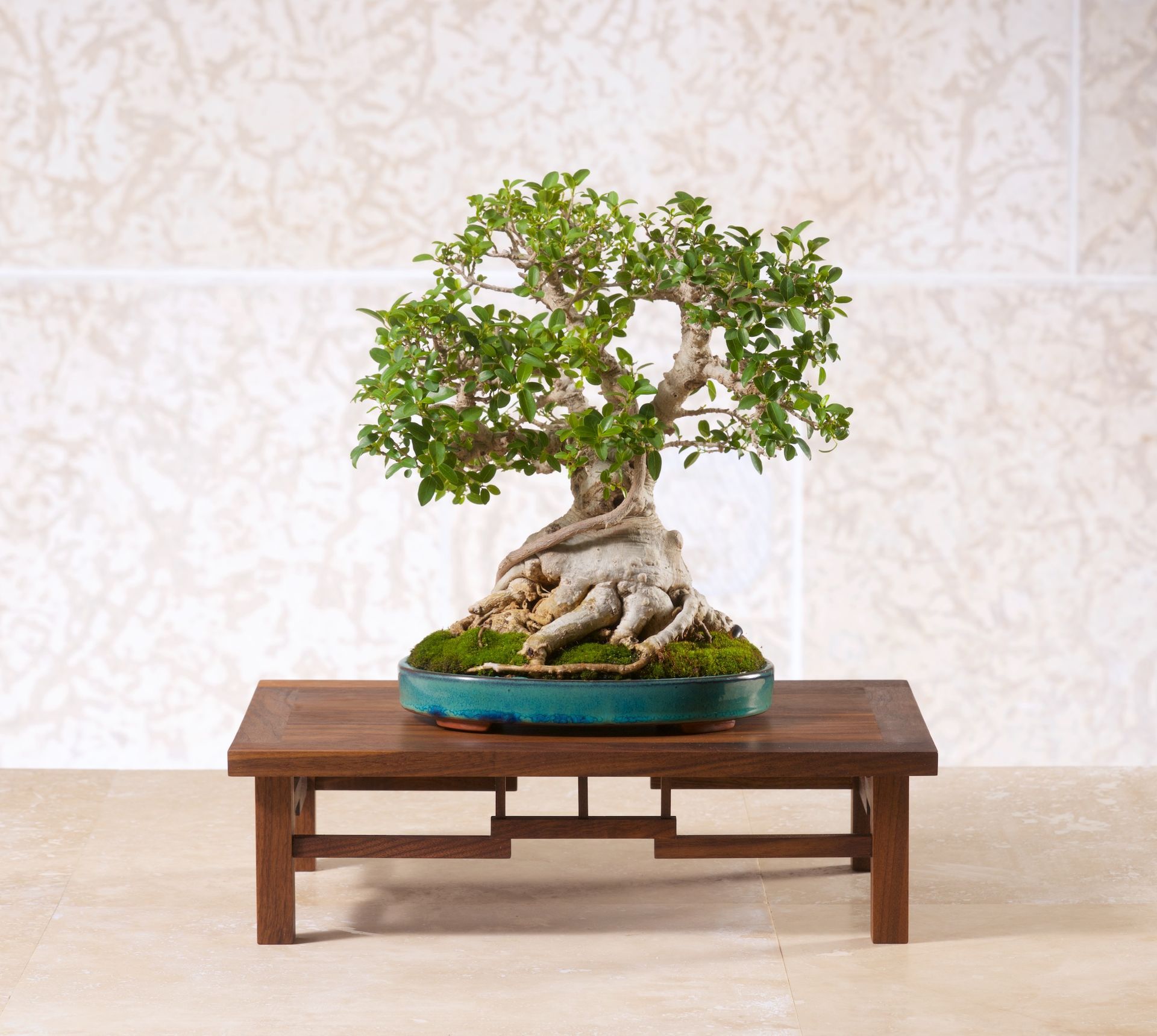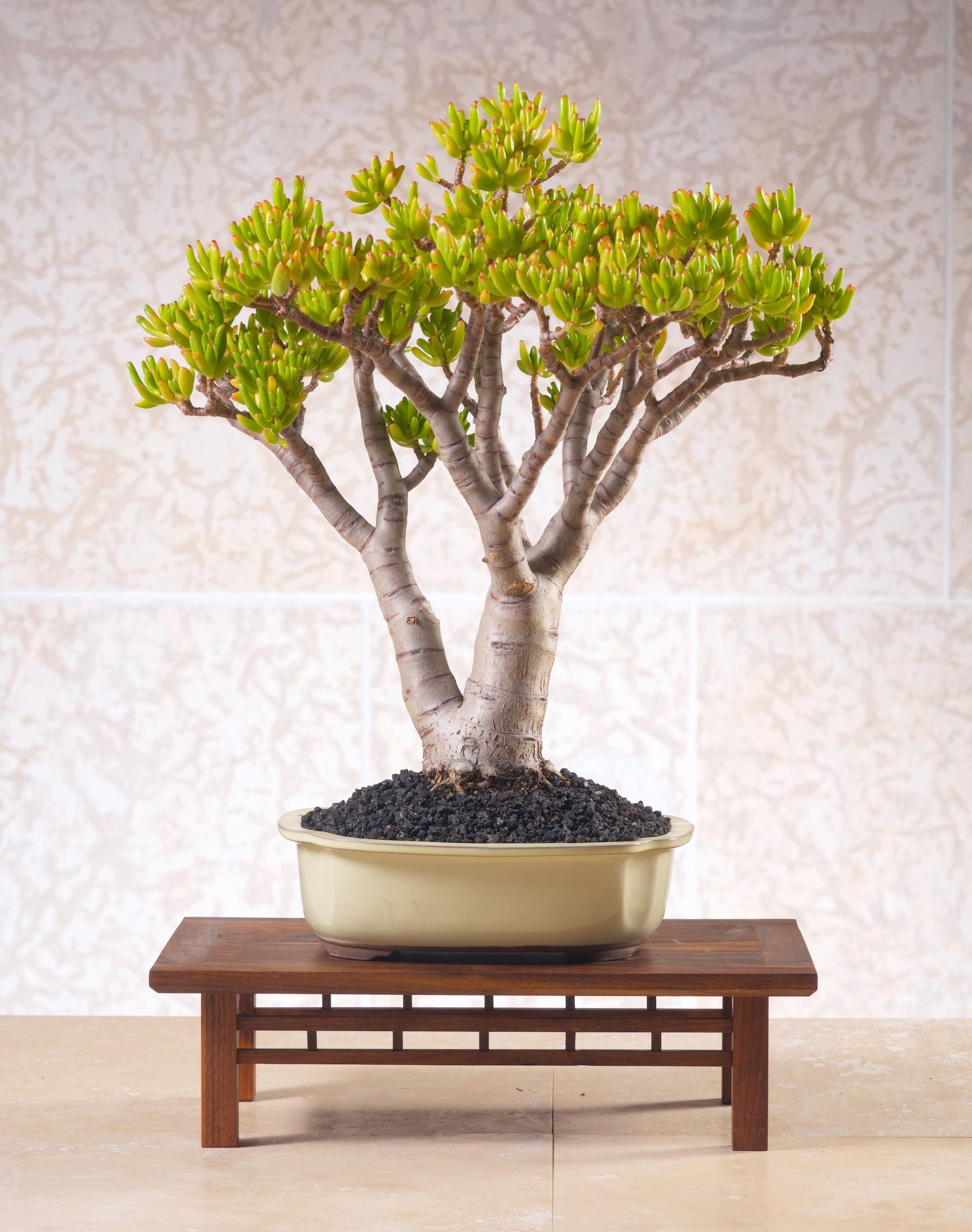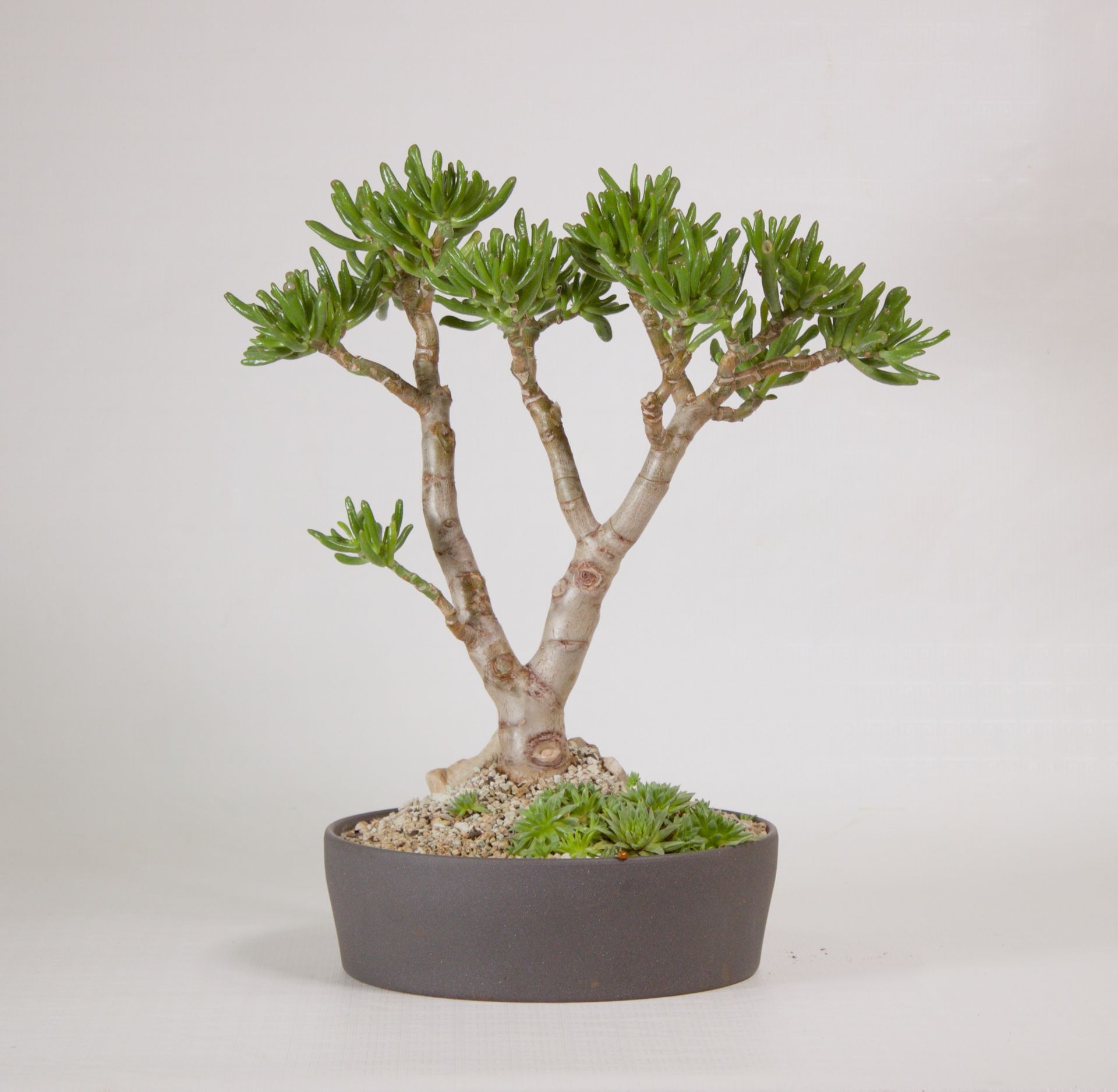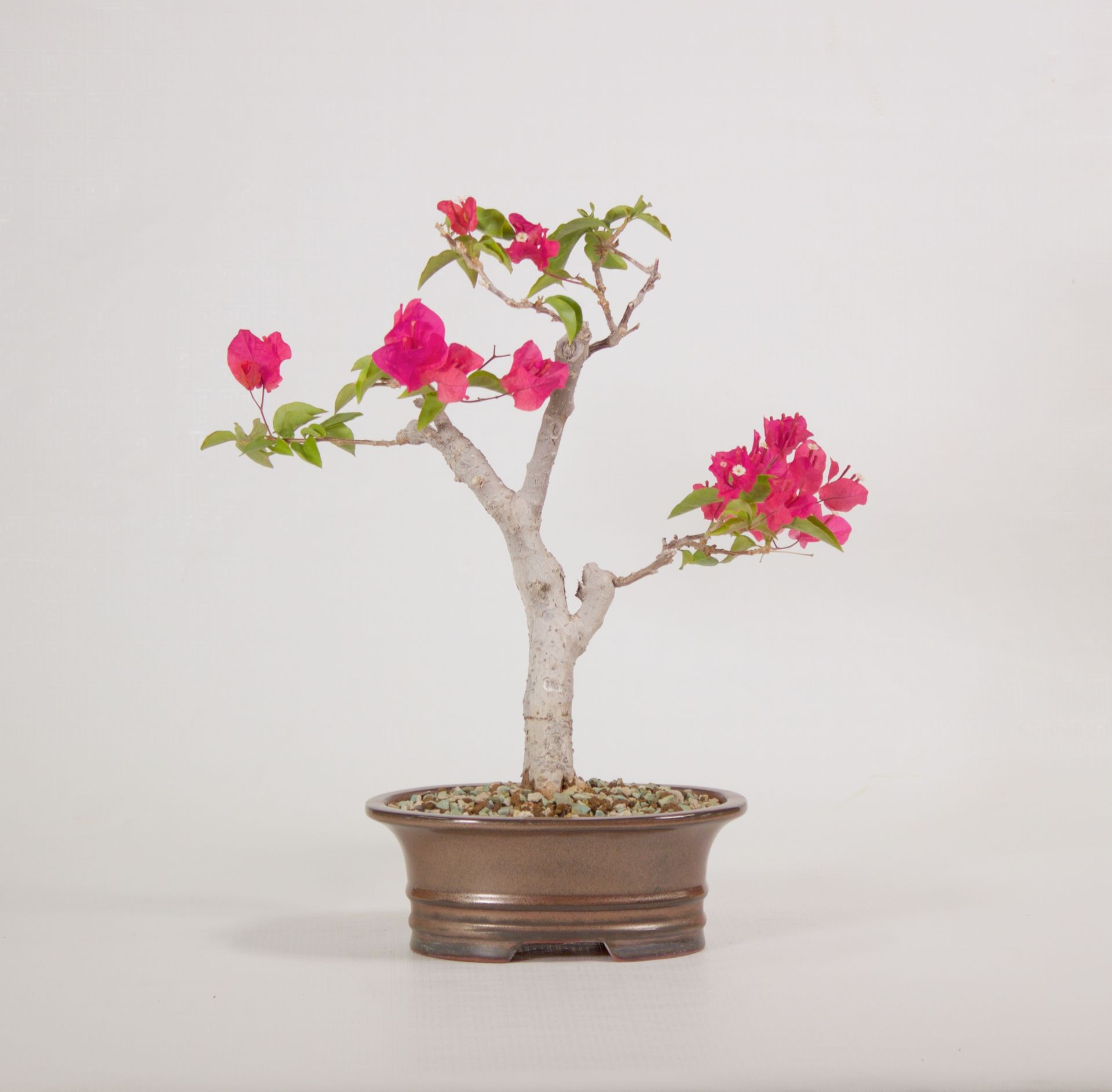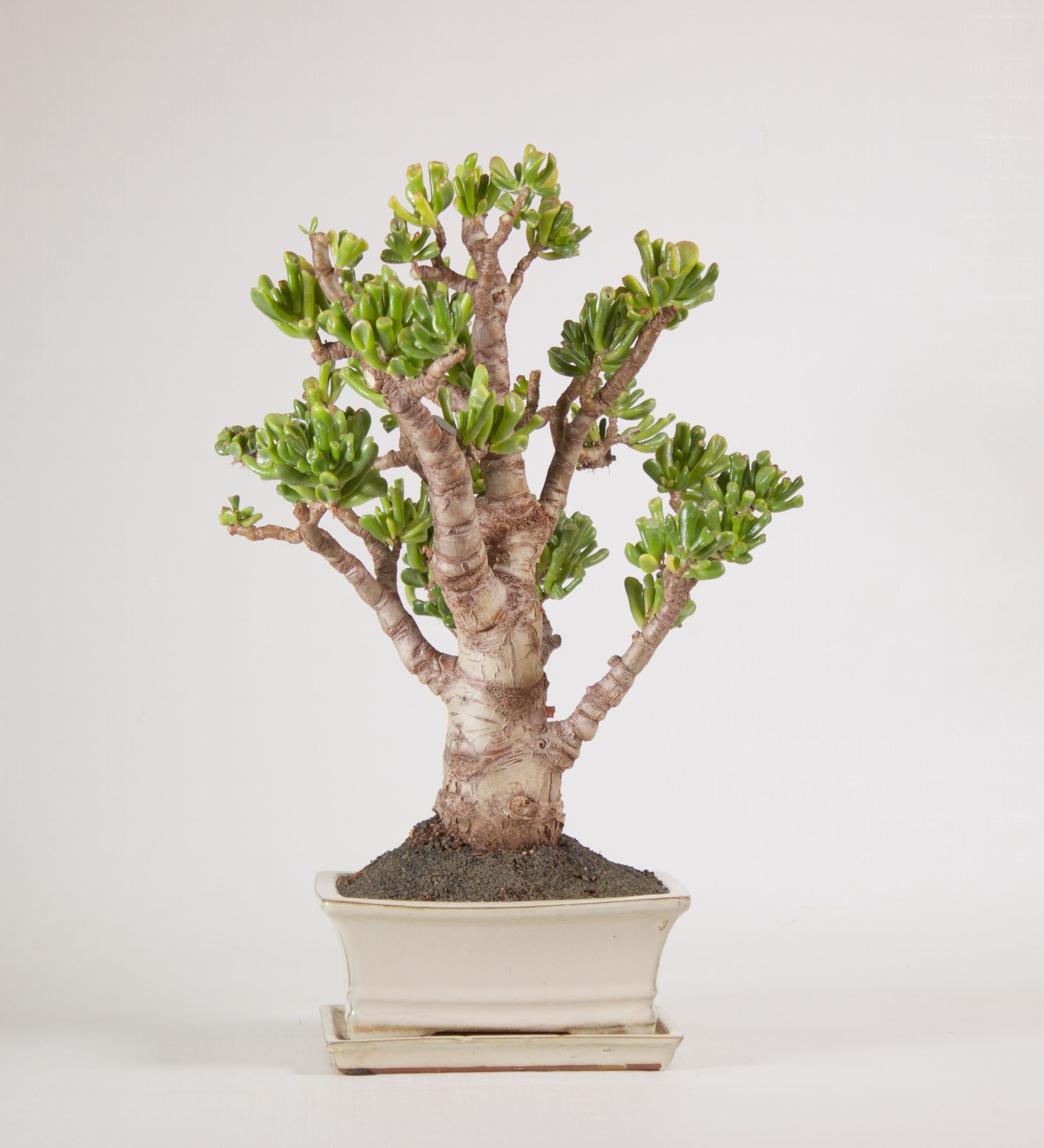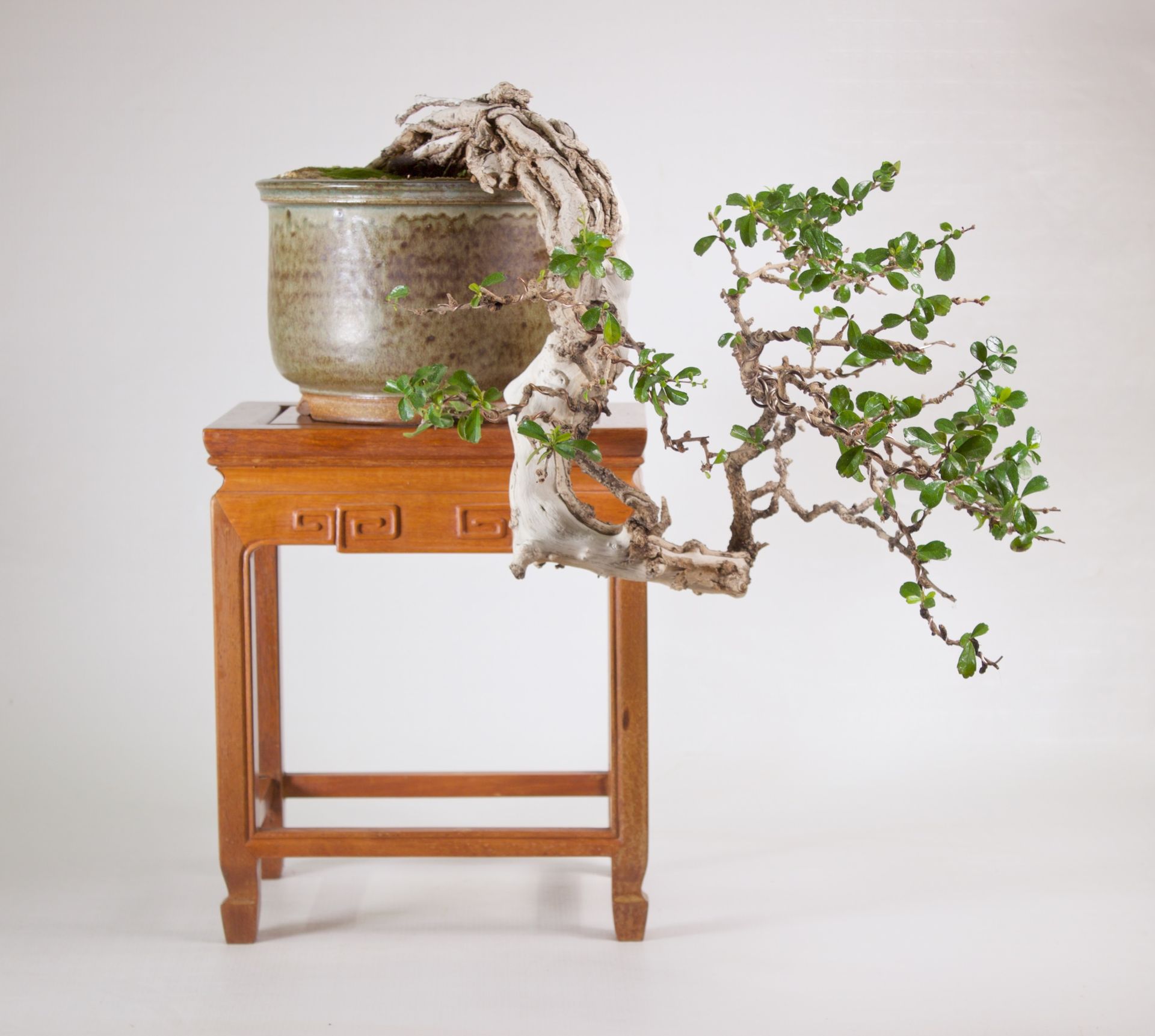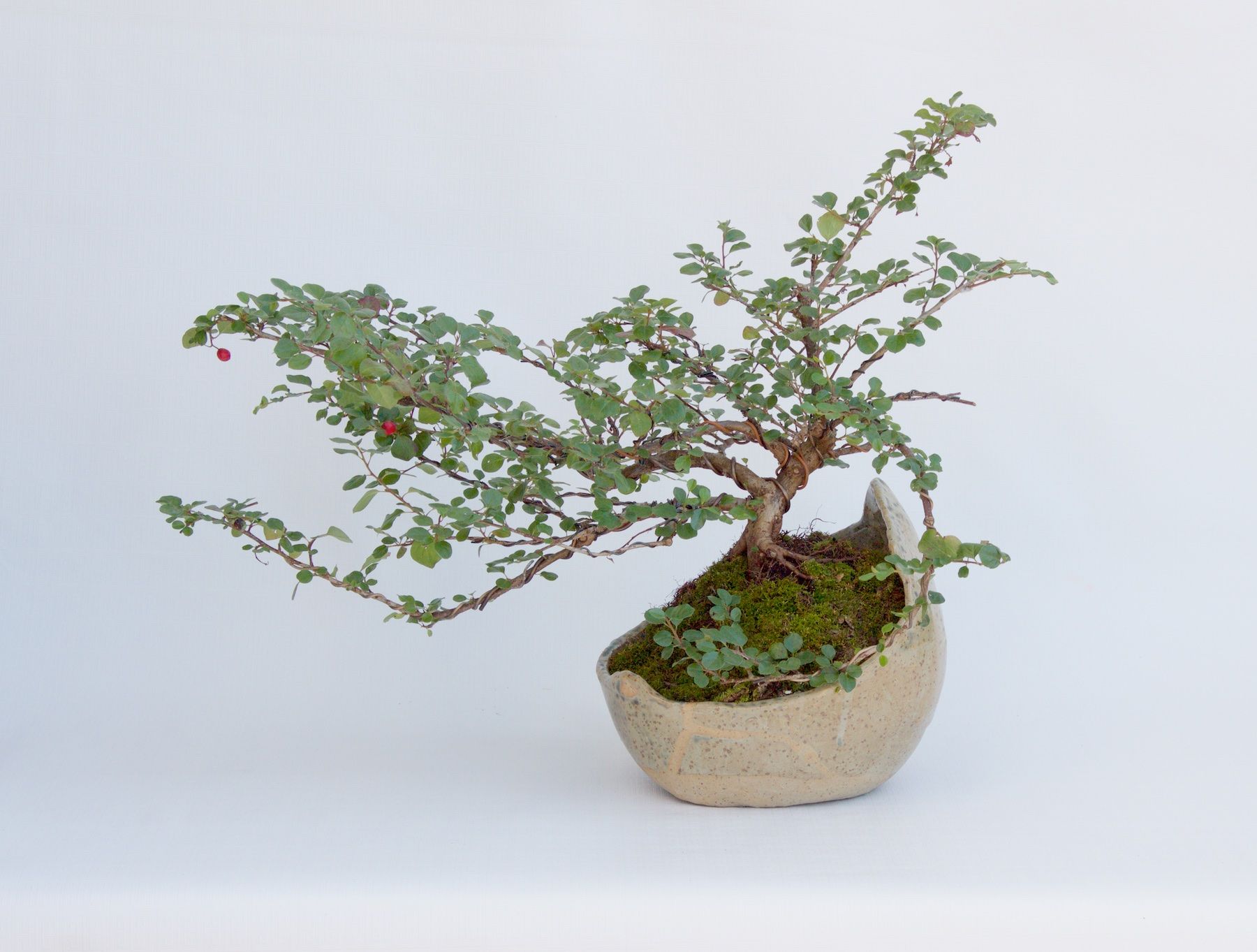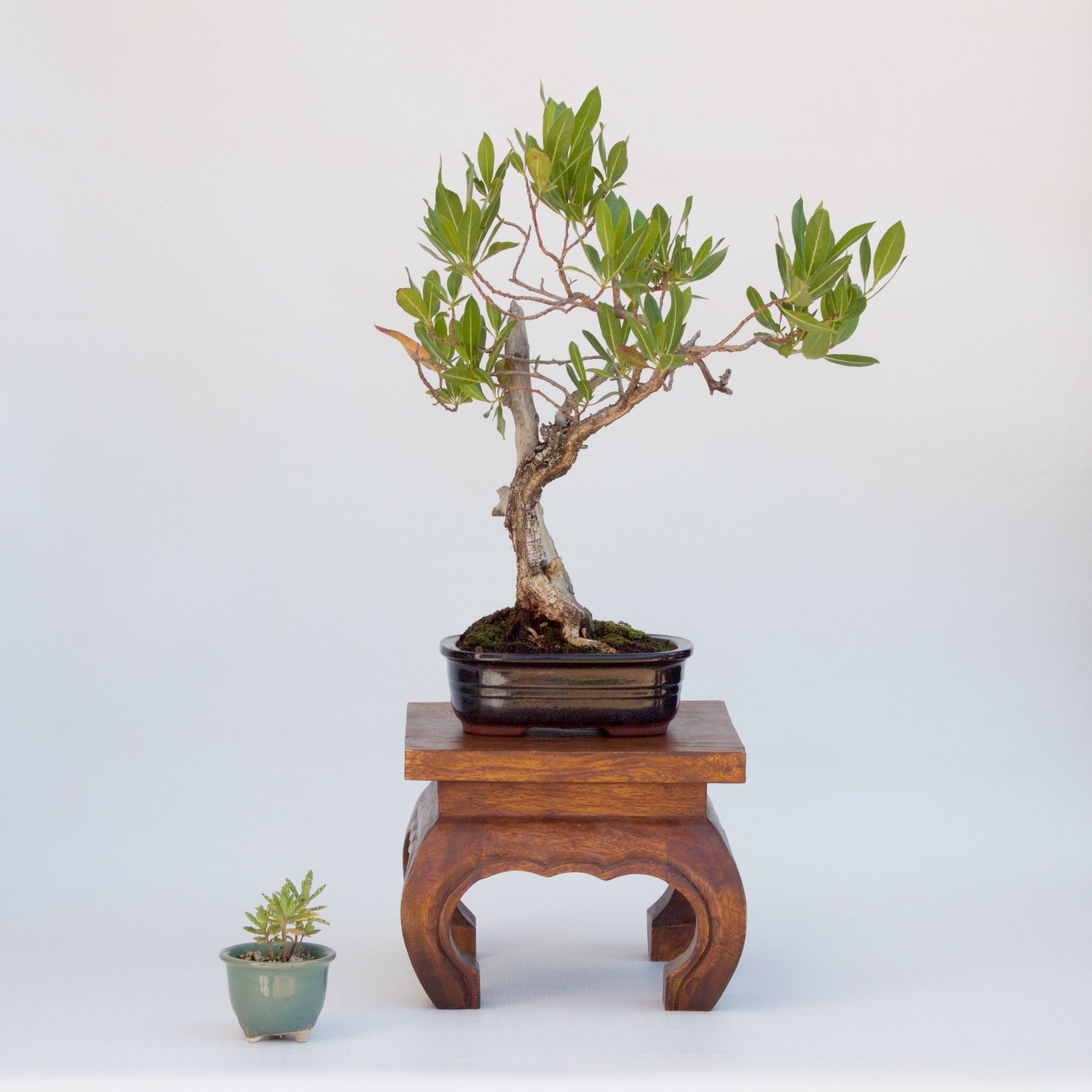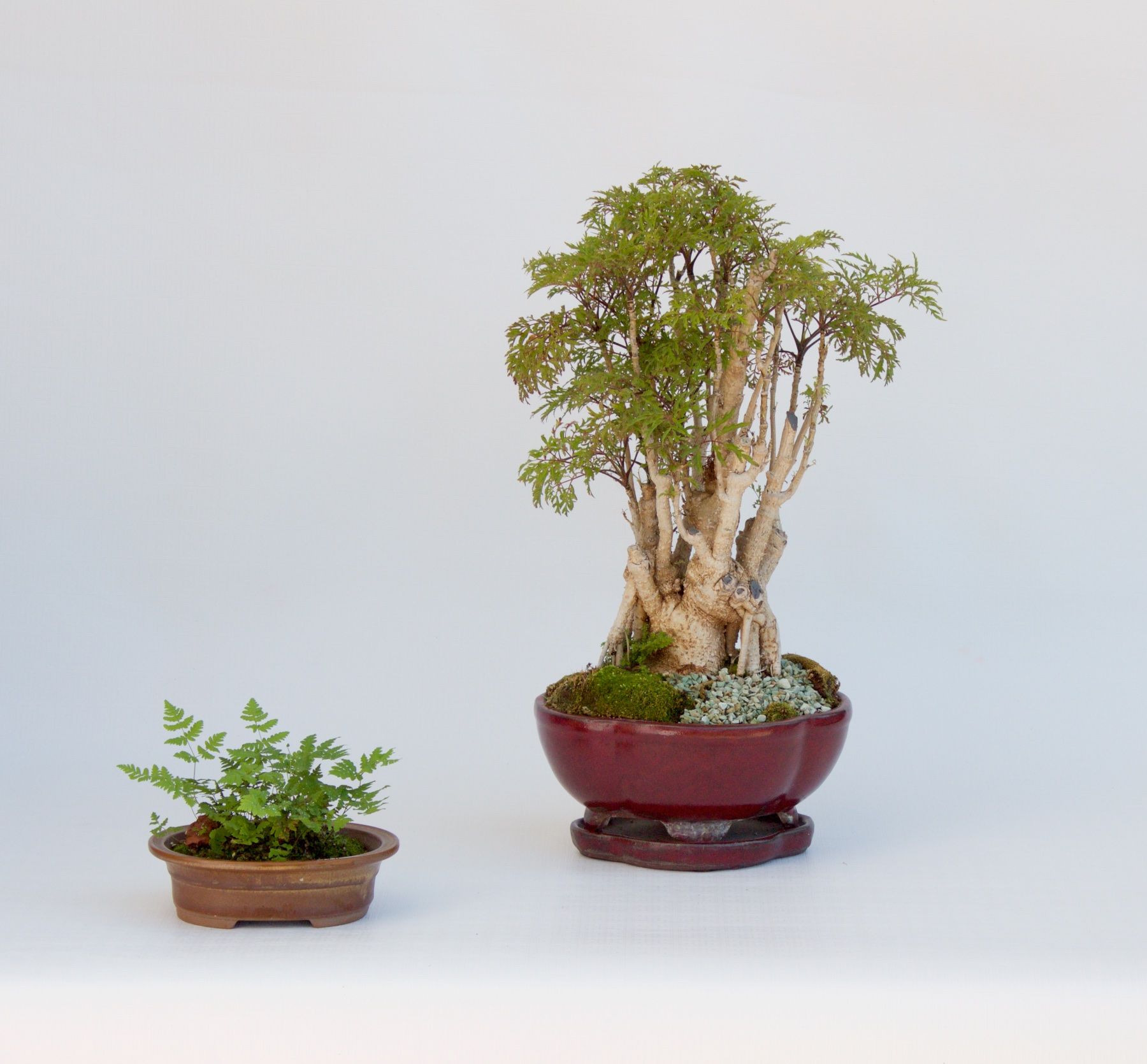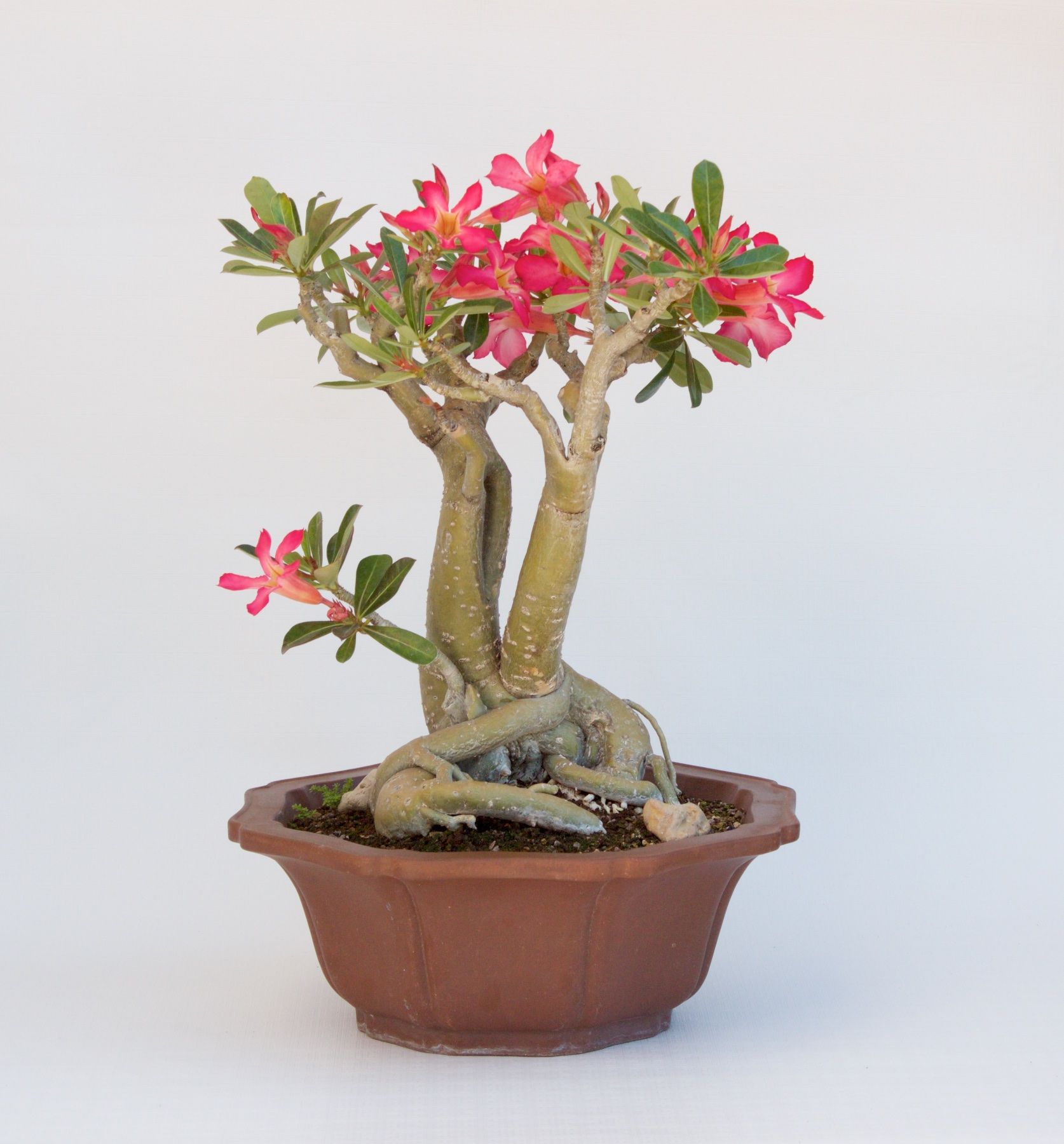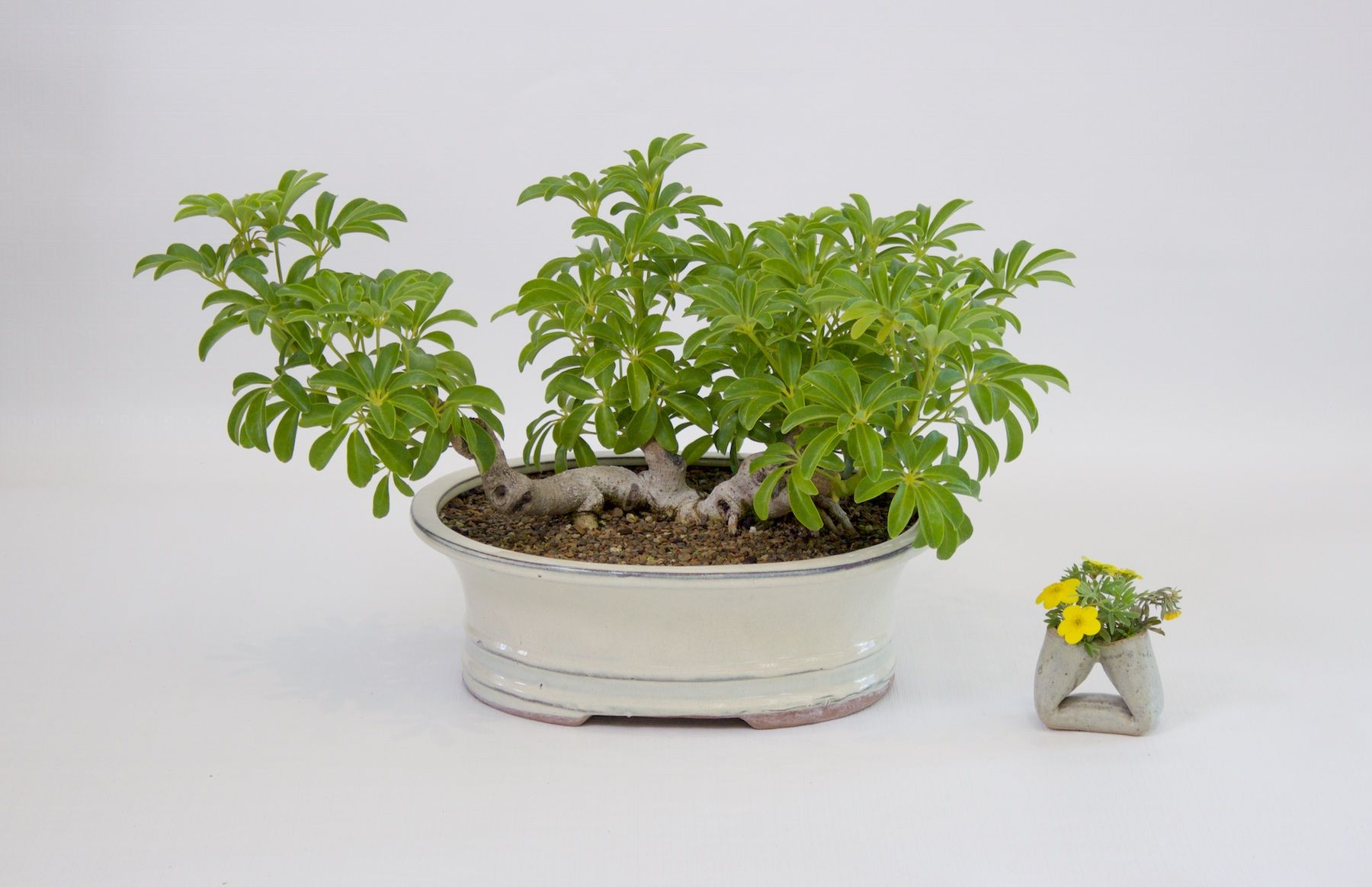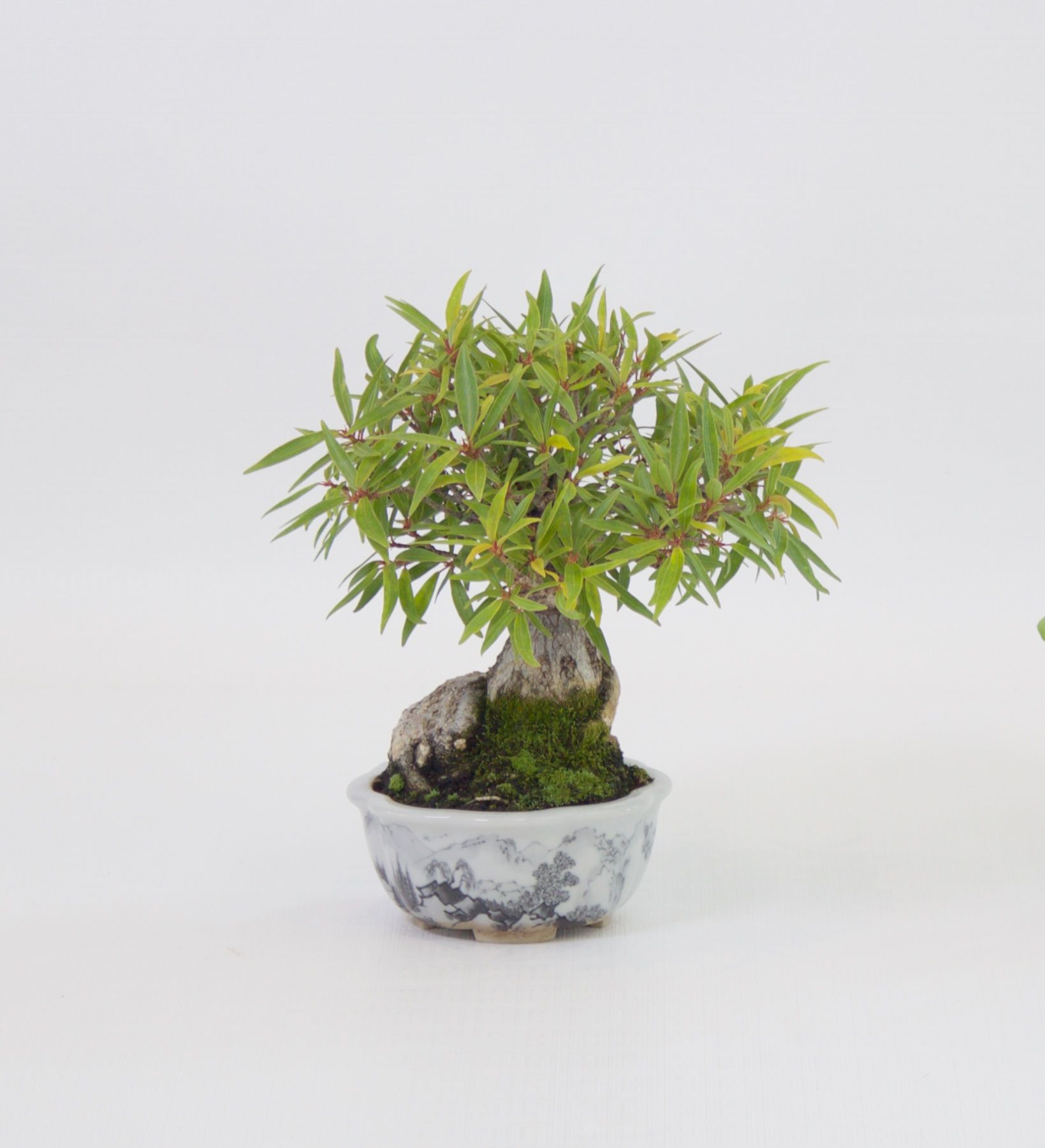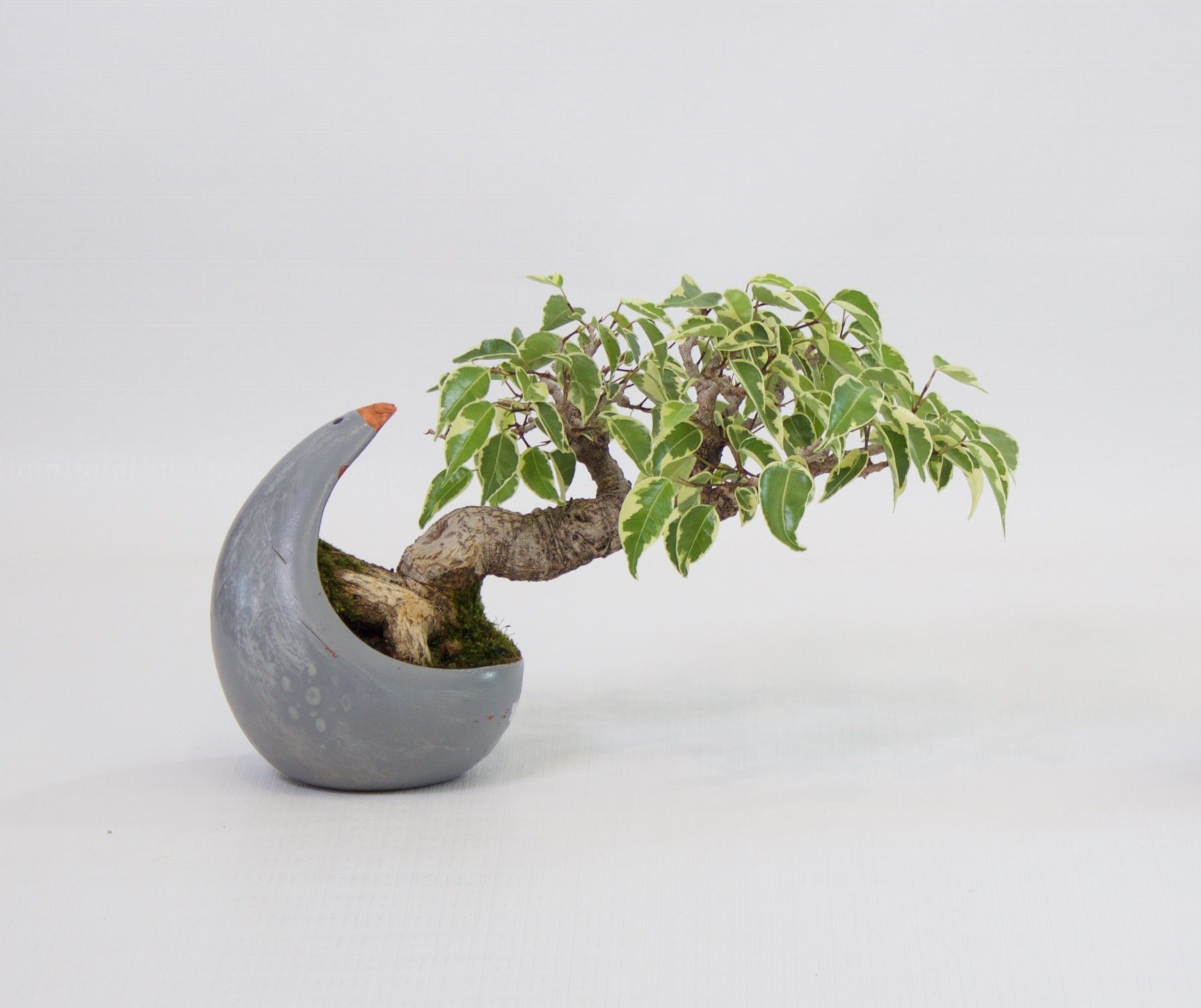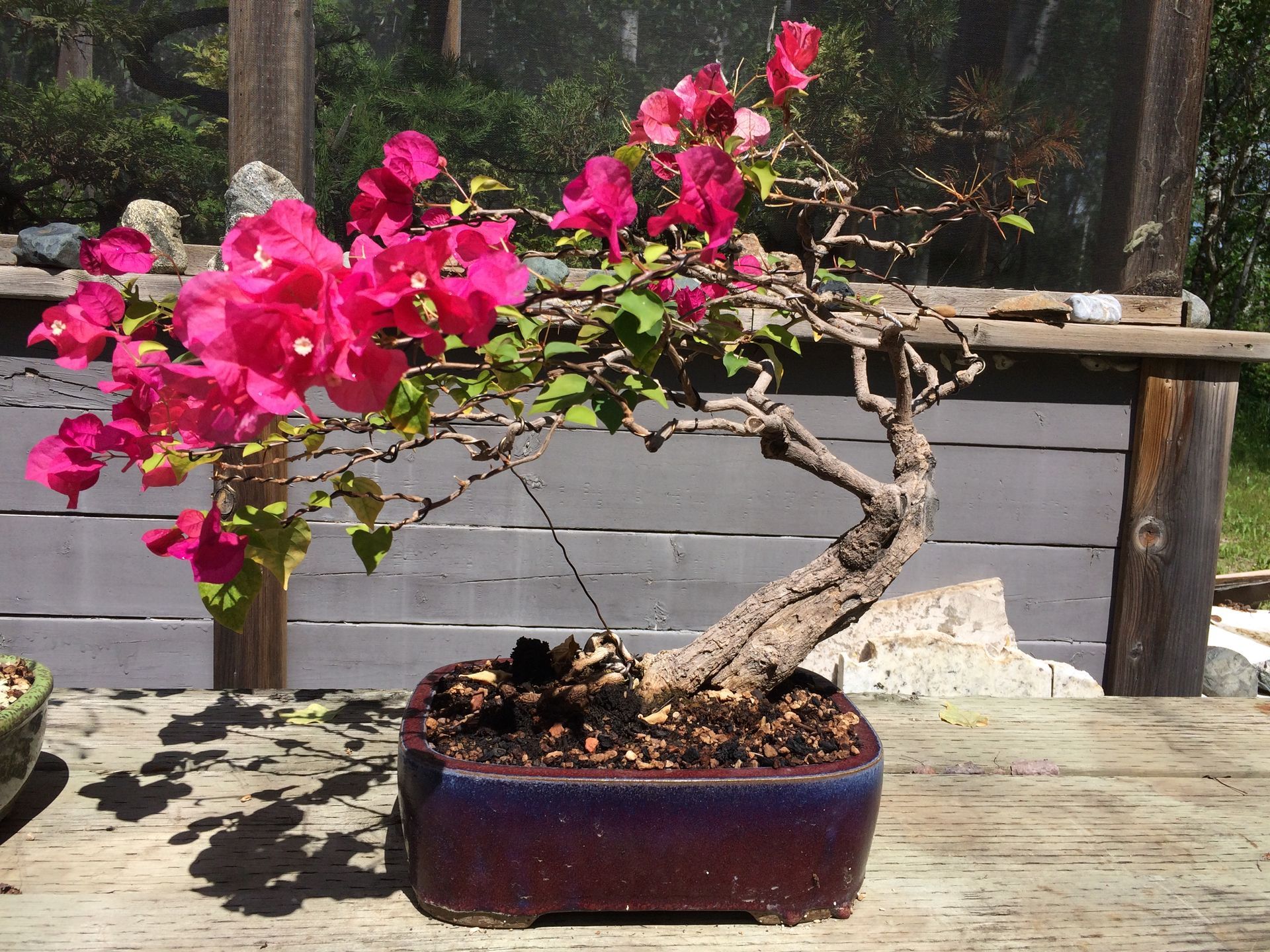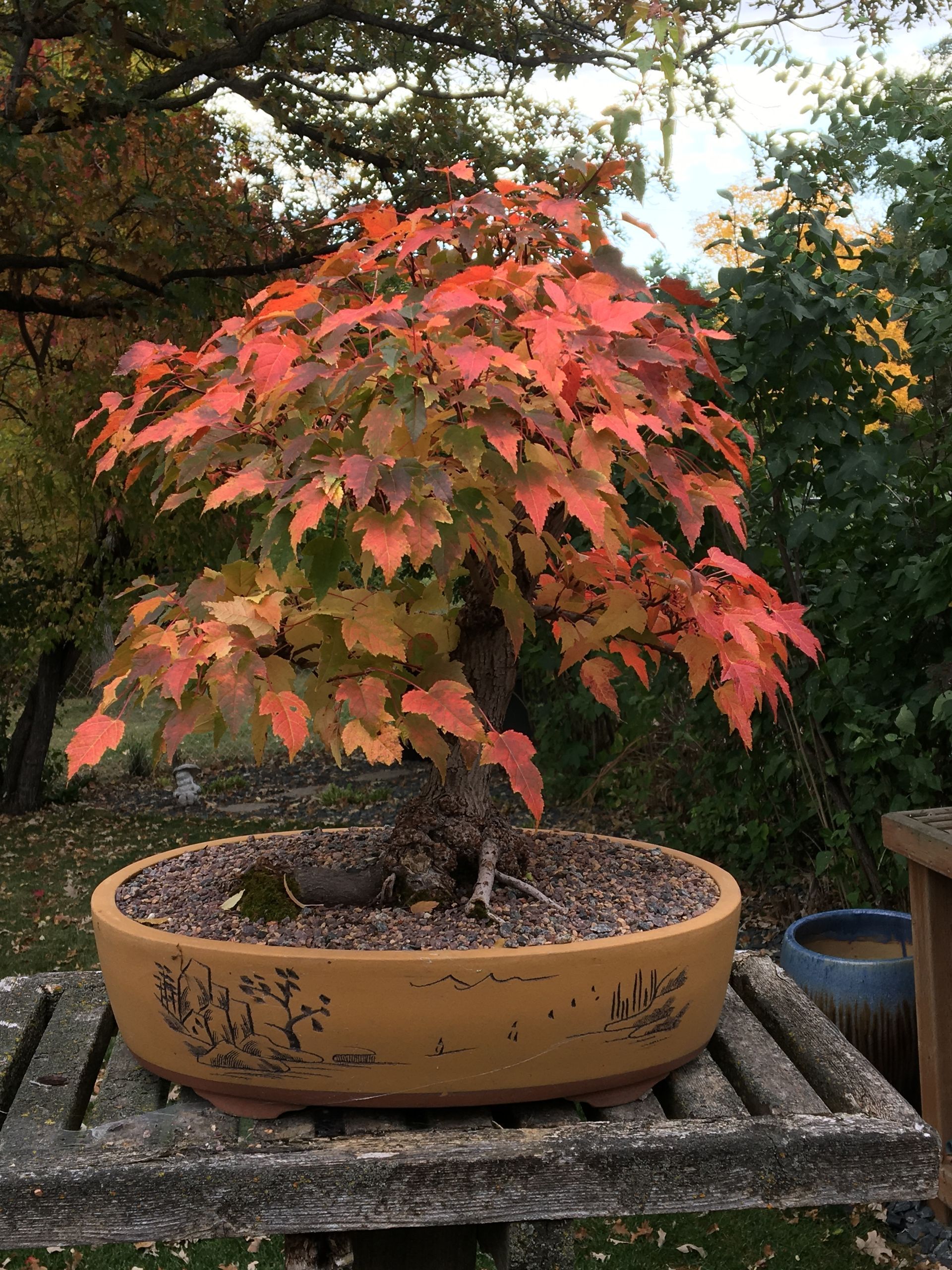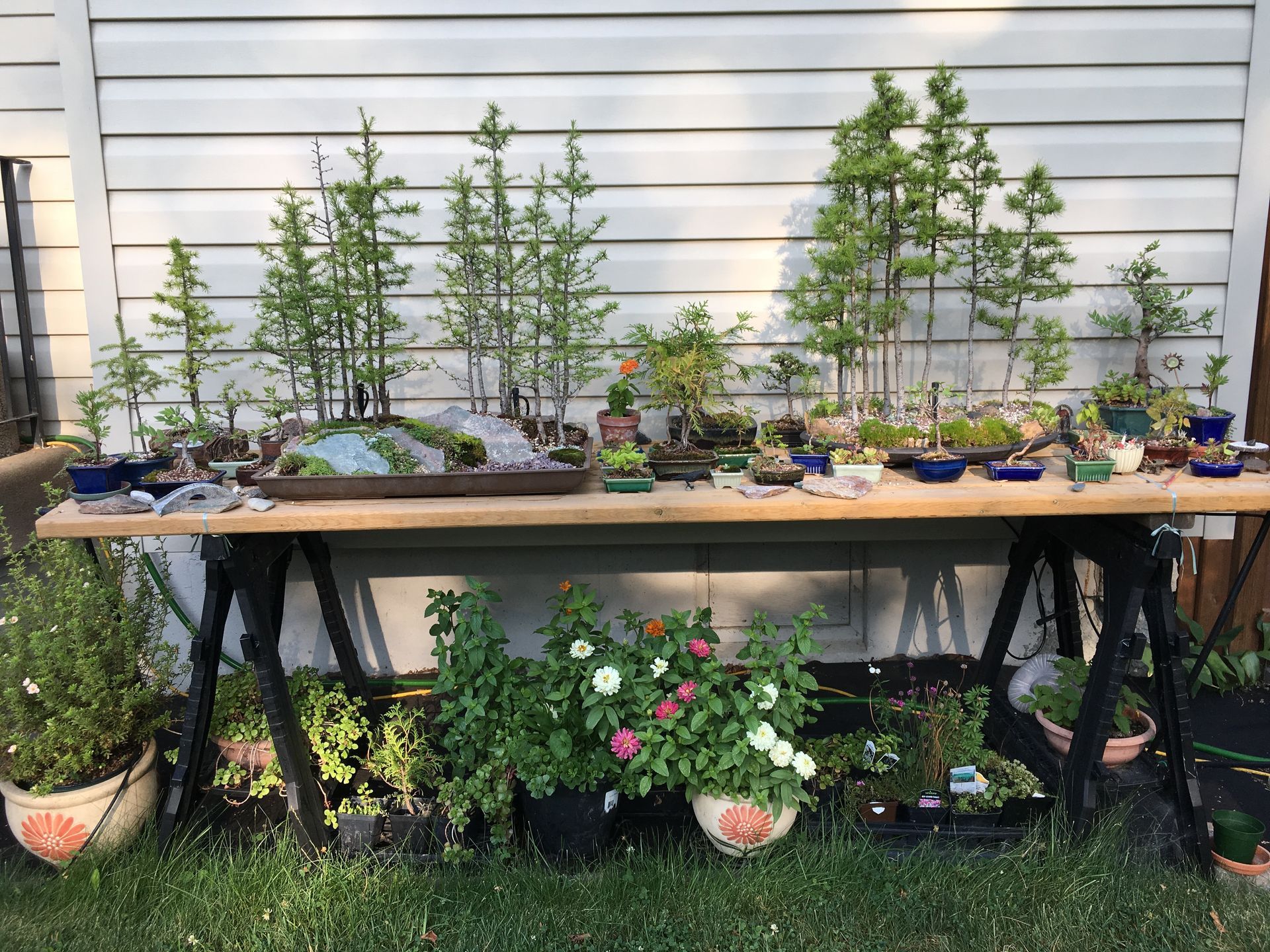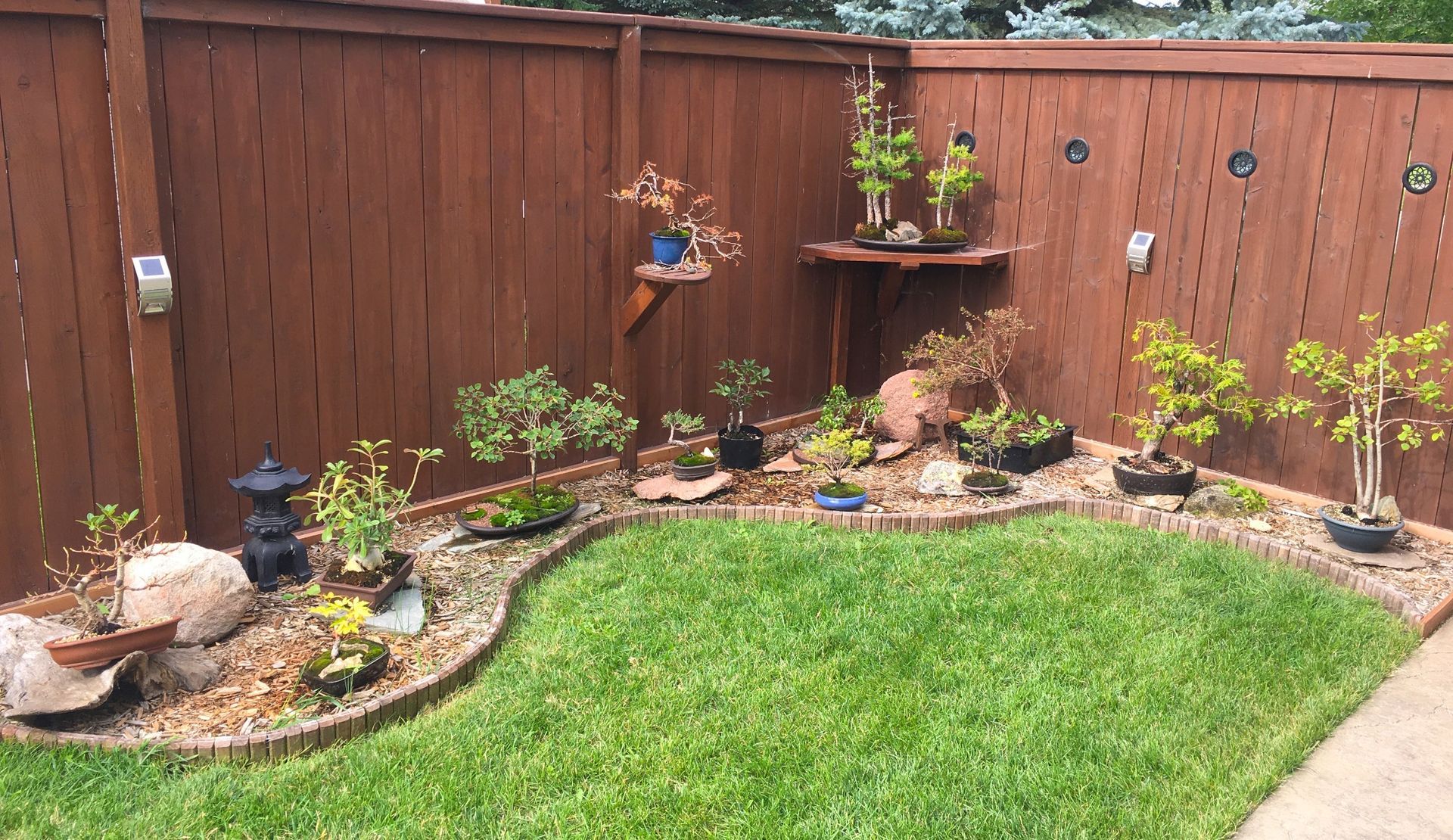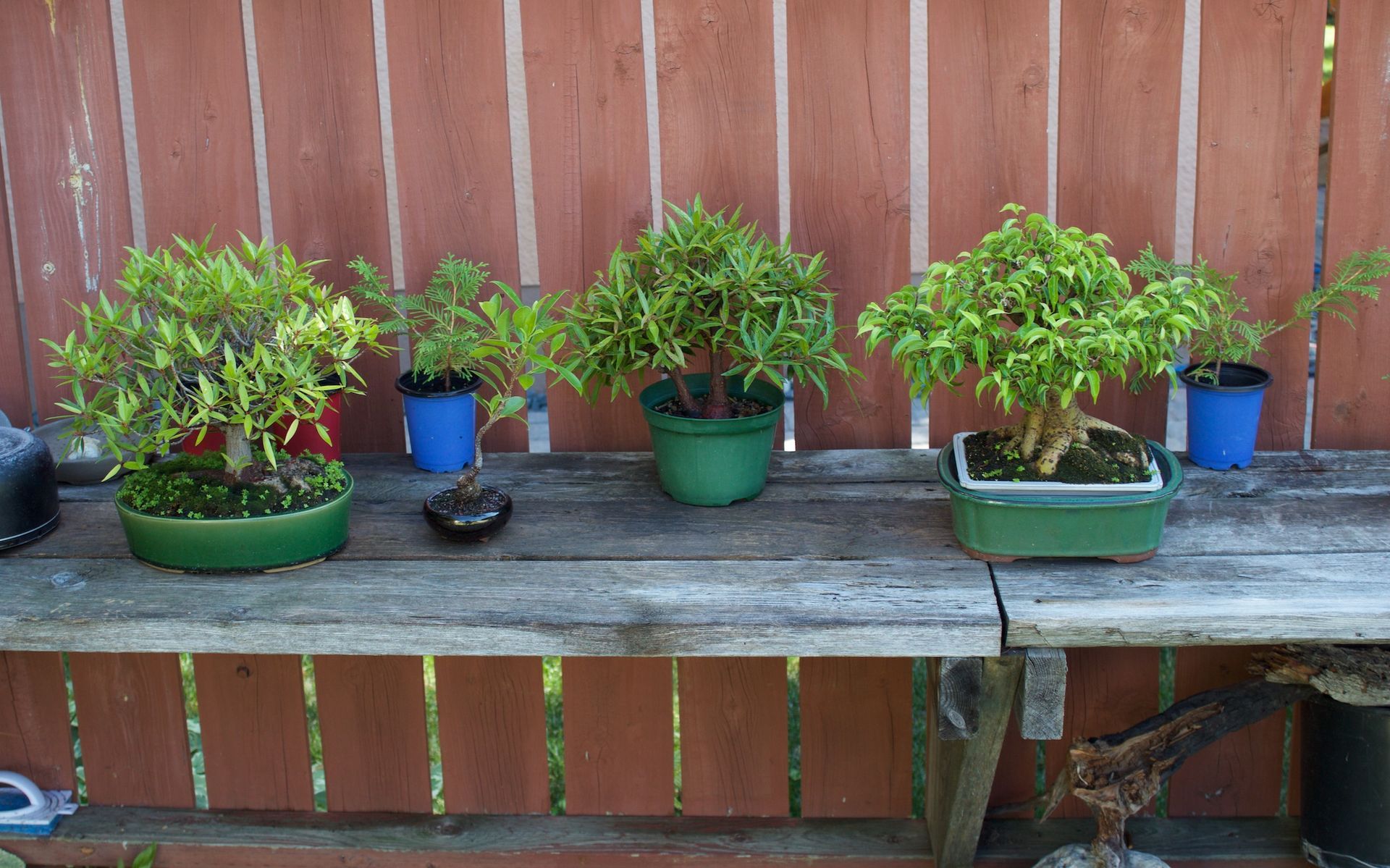WHICH TREES ARE BEST FOR BONSAI?
Species of trees and shrubs with small leaves that bud back on old wood when branches are pruned are the best plants to train as bonsai. When choosing a specimen, look for these characteristics:
- many closely spaced branches
- naturally small leaves
- short, thick, undulating, tapered trunks
- surface roots well distributed around the trunk
Bonsai can be divided into three main groups according to their winter hardiness in Zone 3:
1. NATIVE MANITOBA AND ZONE 3 HARDY TREES
Native Manitoba trees and other winter hardy non-native species are the easiest to work with and to look after. We call these trees outdoor trees in Manitoba because they can survive our long, cold prairie winters outdoors. Indeed, they require a long dormancy to survive, and without this prolonged rest would soon become exhausted and die.
Some popular outdoor trees include:
Eastern Larch (Tamarack), Jack Pine, Scots Pine, White Spruce, White Eastern Cedar, Mugo Pine, Dwarf Alberta spruce, various Junipers, Amur Maple, Cotoneaster, Dwarf Lilac, Crabapple, Wild Plum, Hawthorn, Potentilla.
These trees are available at local garden centers or can be collected in the wild. When purchasing from a garden center, look for species and varieties suited to growing zone 3.
2. TEMPERATE TREES
Temperate trees which thrive in moderate climates like Japan, England, or Vancouver, cannot survive our Manitoba winters outdoors. But like their hardier cousins, they do require a dormant period. This makes growing them more difficult, as they require a cold frame with regulated, moderate temperatures. Another technique is to provide 1200 to 1500 hours of dormancy in autumn after our first hard frost. While temperatures are 0°C or warmer, the trees are left outdoors. On nights when colder temperatures are expected, the trees are brought indoors for the night and back outdoors in the morning as temperatures rise above freezing. By the time daytime temperatures are 0°C or colder, it will be late November. The trees are brought indoors and placed under grow lights. For the trees, it is now spring, and they will come out of dormancy and start growing. This technique provides an additional five months of growth per year.
Some popular temperate trees often available locally include:
Procumbens Juniper, Shimpaku juniper, Boxwood, Black Pine, Japanese Maples, and Azalea. These plants will be labeled as growing zones 4 to 6.
3. TROPICAL and SUB-TROPICAL TREES
Tropical and sub-tropical trees can be grown in your home with supplemental lighting and high humidity levels around them in winter. Grow boxes or grow tents are best.
Some popular tropicals and sub-tropicals include:
Ficus Retusa, Ficus Golden Coin, Ficus Tigerbark, Ficus Salicifolia, Serissa, Myrtle, Pomegranate, Jade, Fukien Tea, Bougainvillea, Chinese Sweet Plum, Privet, Arboricola, and herbs like Rosemary, Lavender, Sage, Laurel, Thyme and Tarragon.
ALL TREES SHOULD BE KEPT OUTDOORS IN THE SUMMER!
Here are some examples of our members' gardens.
YOUR FIRST BONSAI
Some florists carry ‘gift bonsai,’ and small bonsai can frequently be found in garden centres and even home centres. Be very cautious about buying these ready-made bonsai. If it costs the same as a bouquet of cut flowers, expect it to last just as long. Buy your trees from a knowledgeable retailer who offers healthy trees and sound advice. Better still, create your own bonsai. After you learn the bonsai basics, start your bonsai collection from good nursery stock or dig a tree from the garden or from the wild. Florist shops and some garden centres carry selected tropical house plants that can be trained with bonsai techniques. This will take longer, but it will be much less expensive, and it will truly be ‘your tree’!
We strongly encourage you to take an introductory course before purchasing tree or buying one for others. A better choice would be to buy them a membership or a course if it's within your budget.
